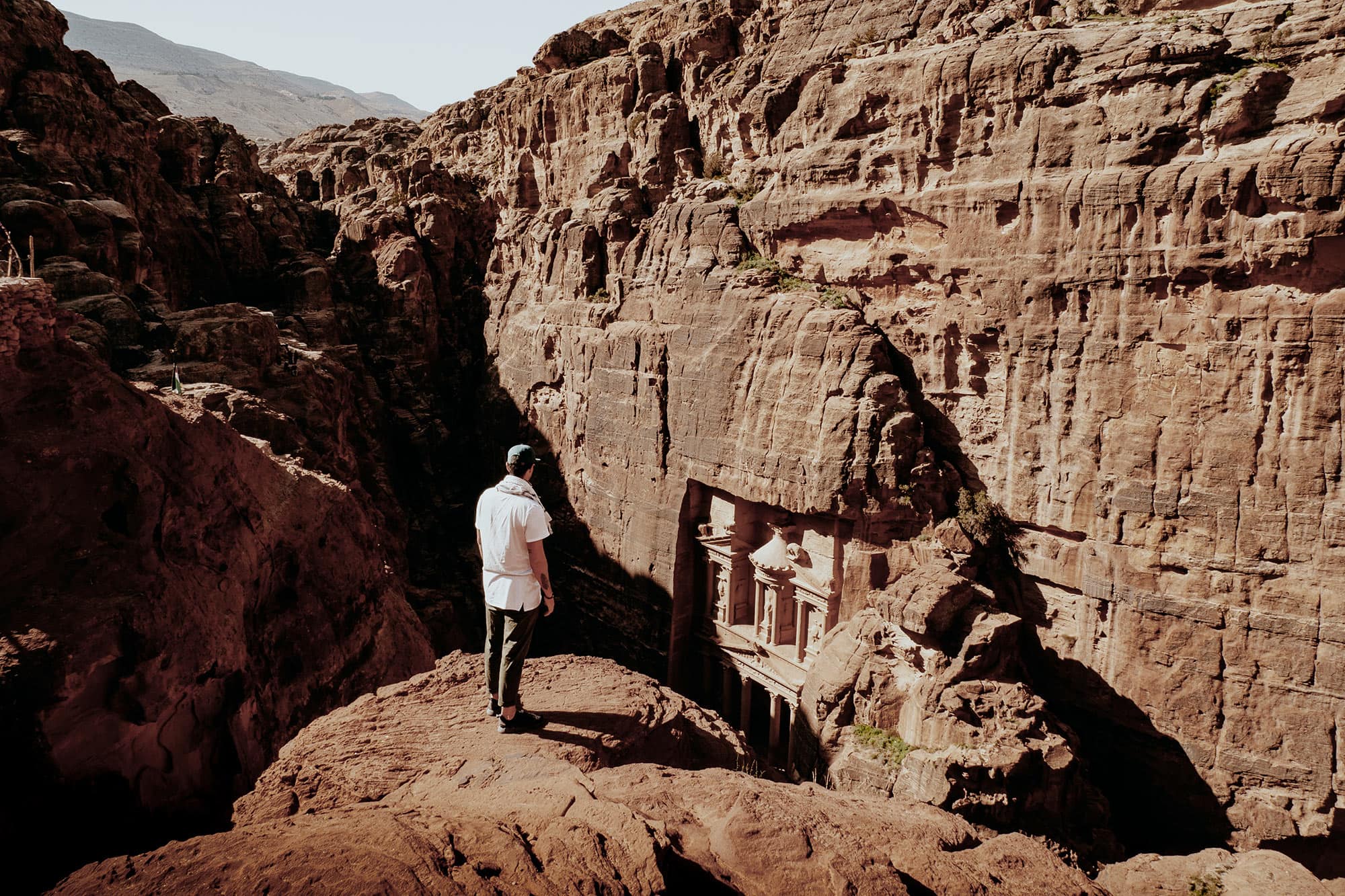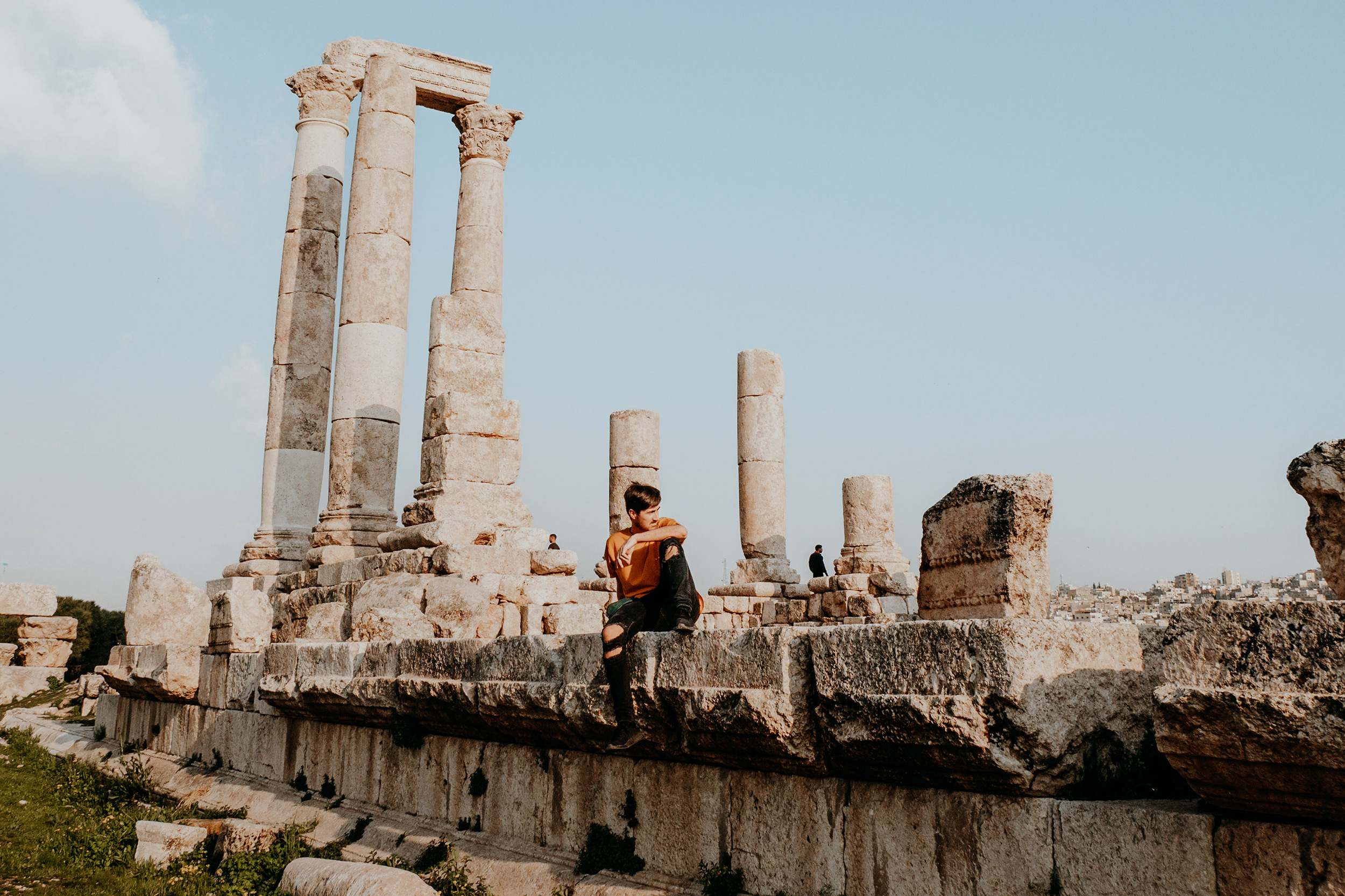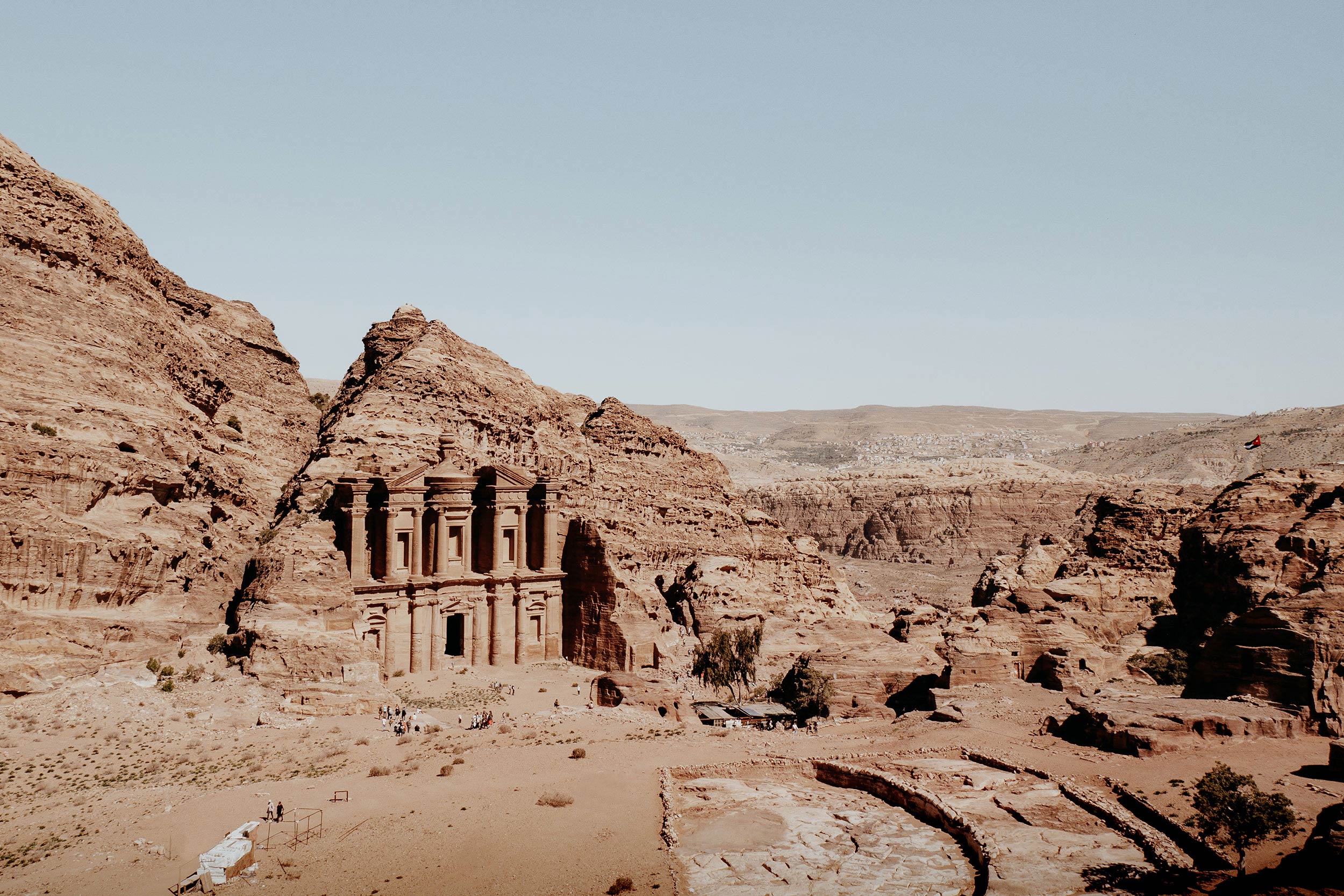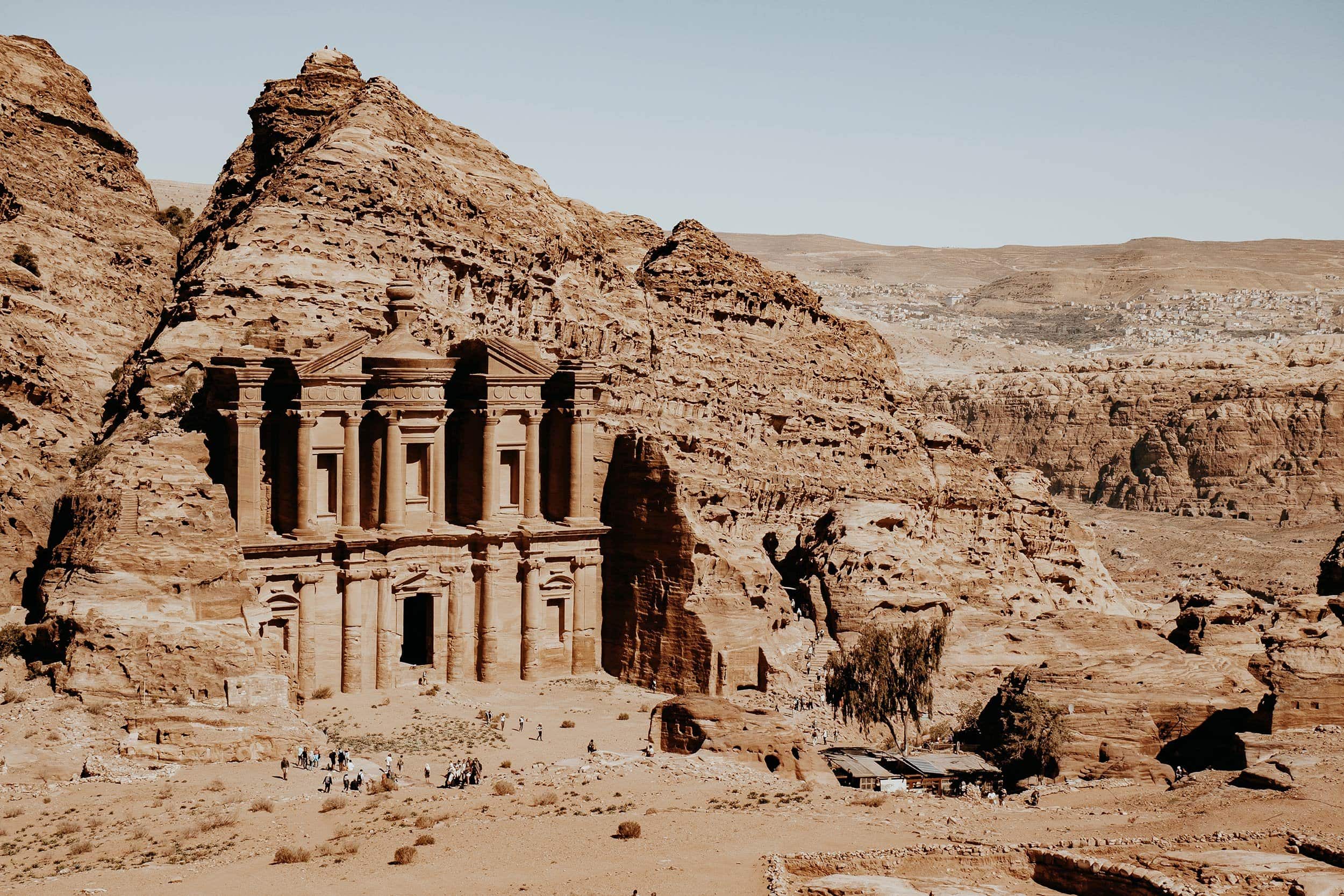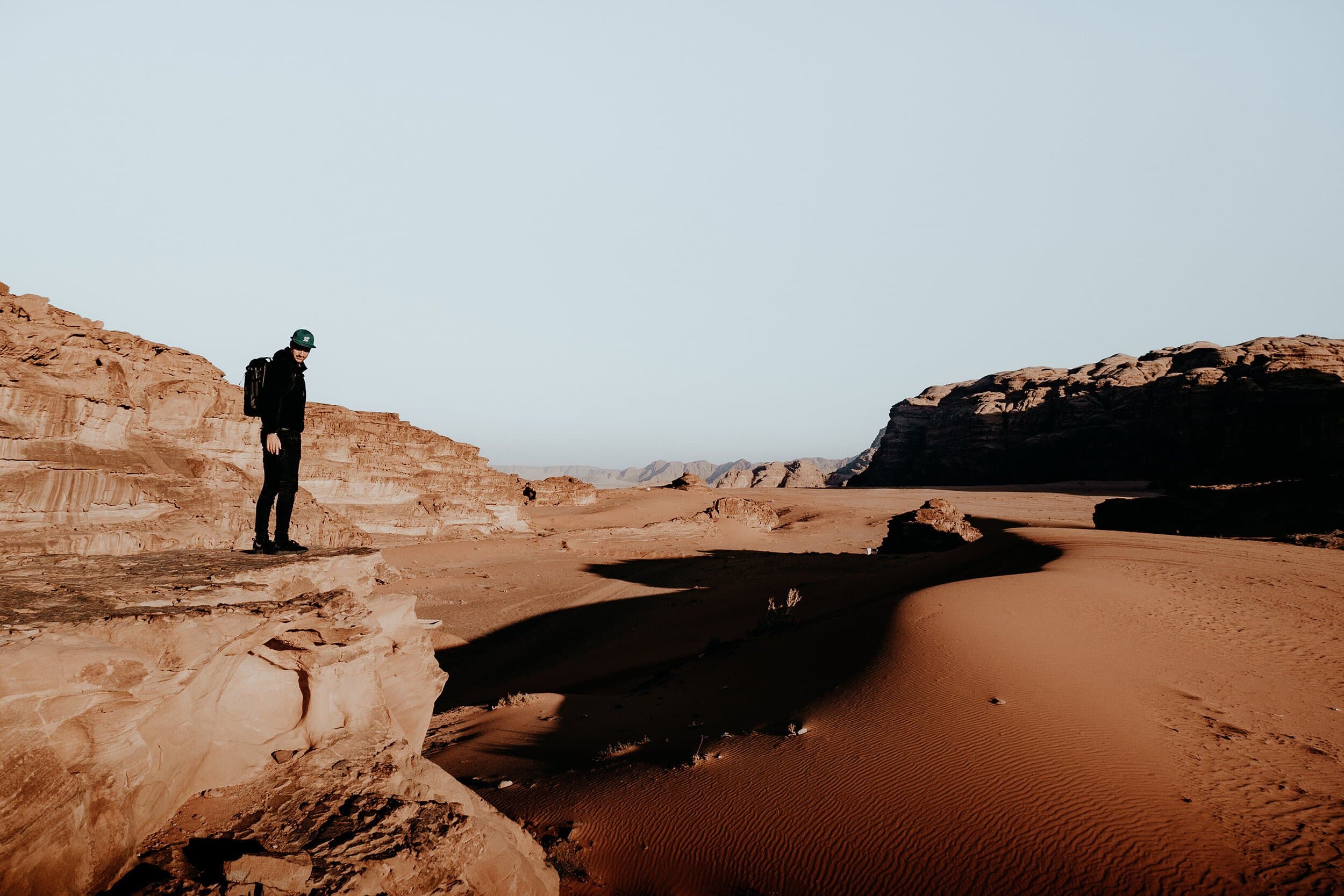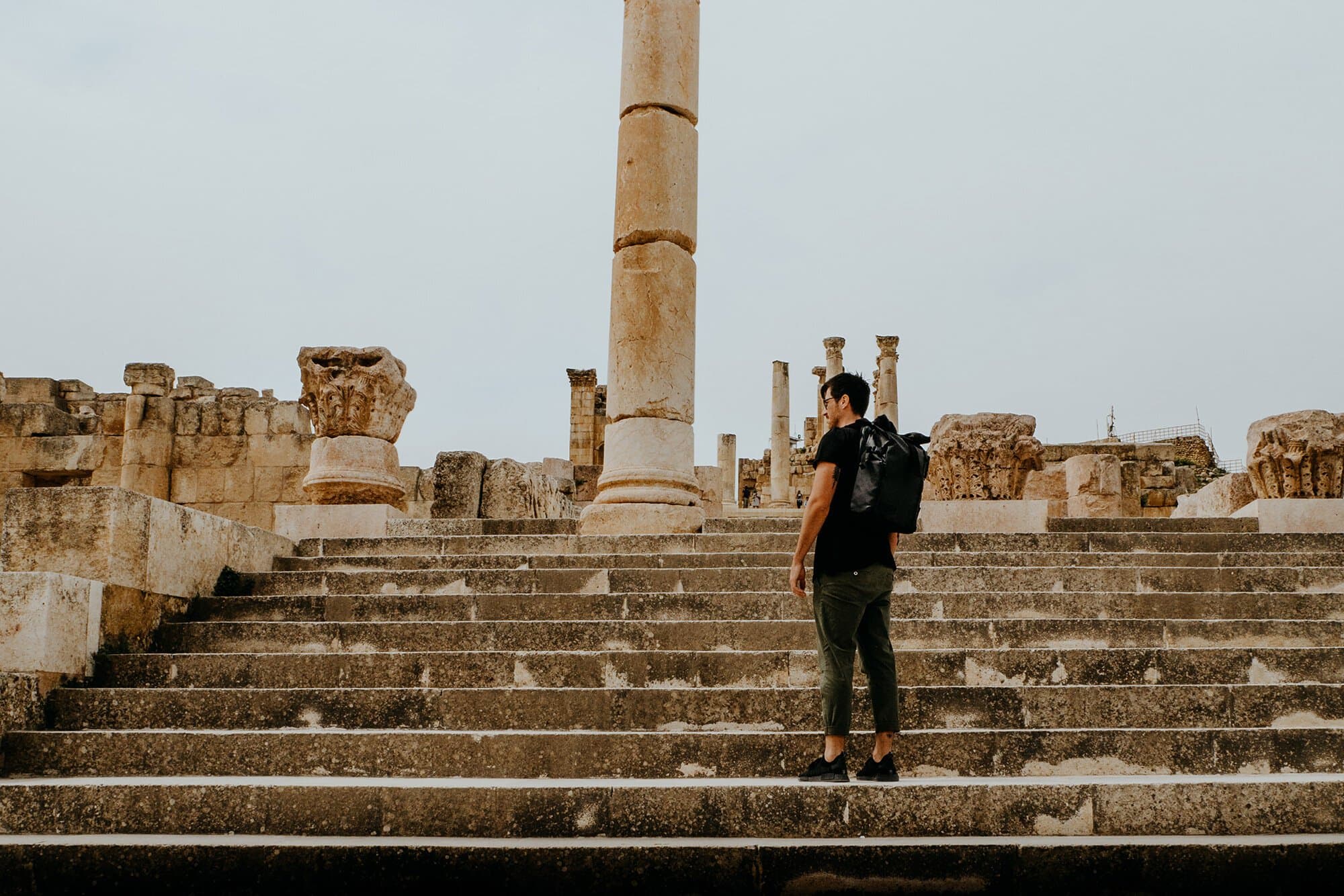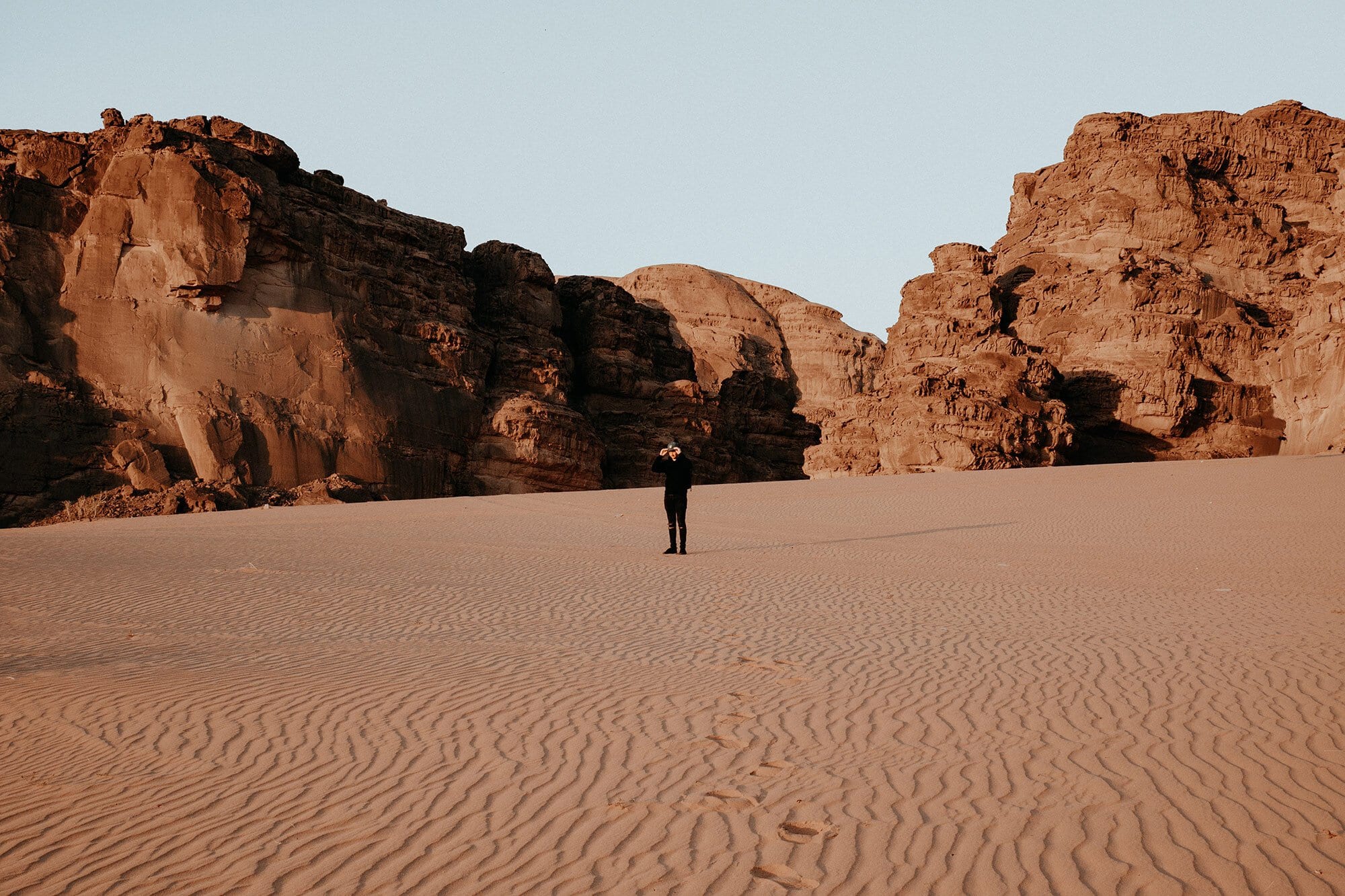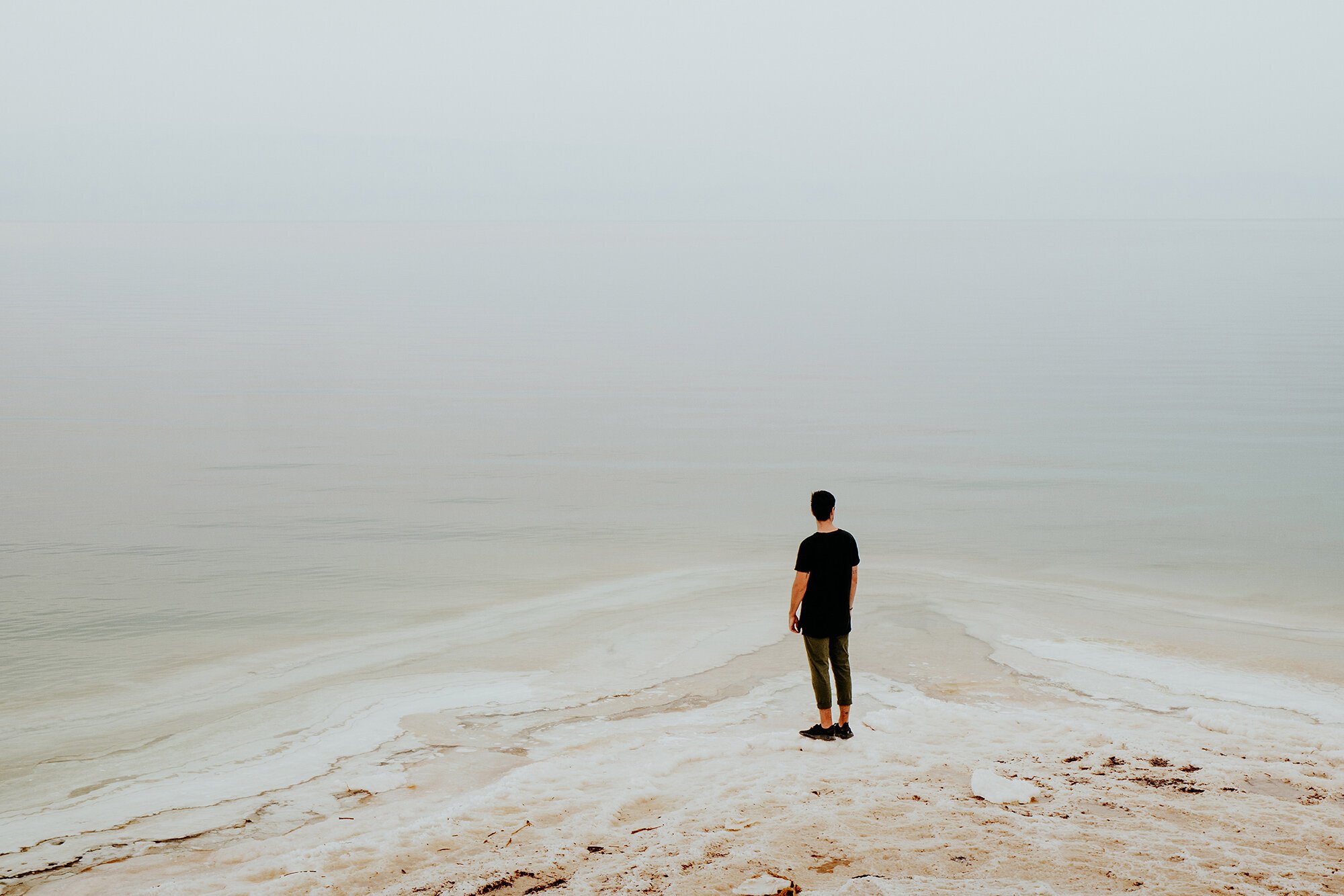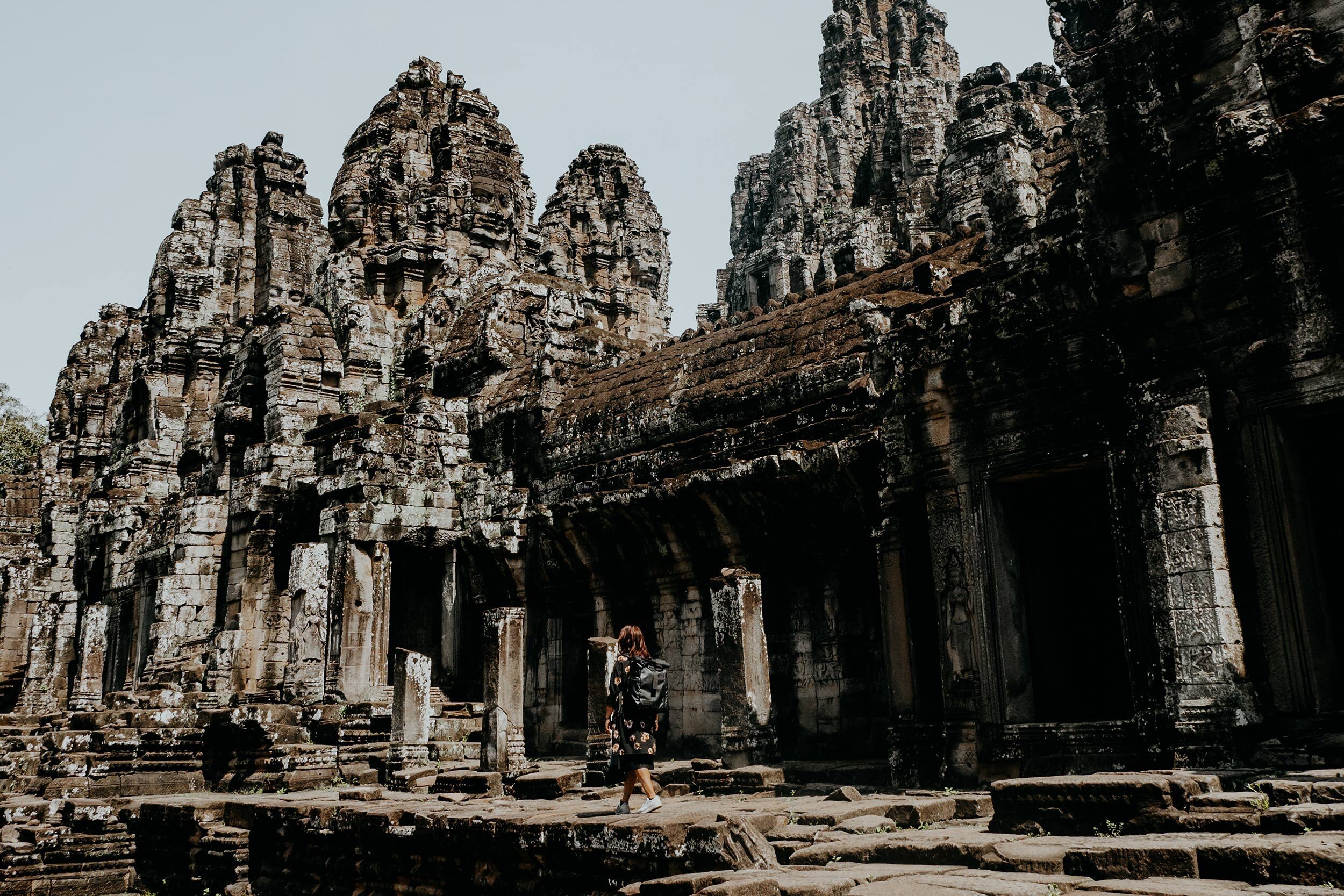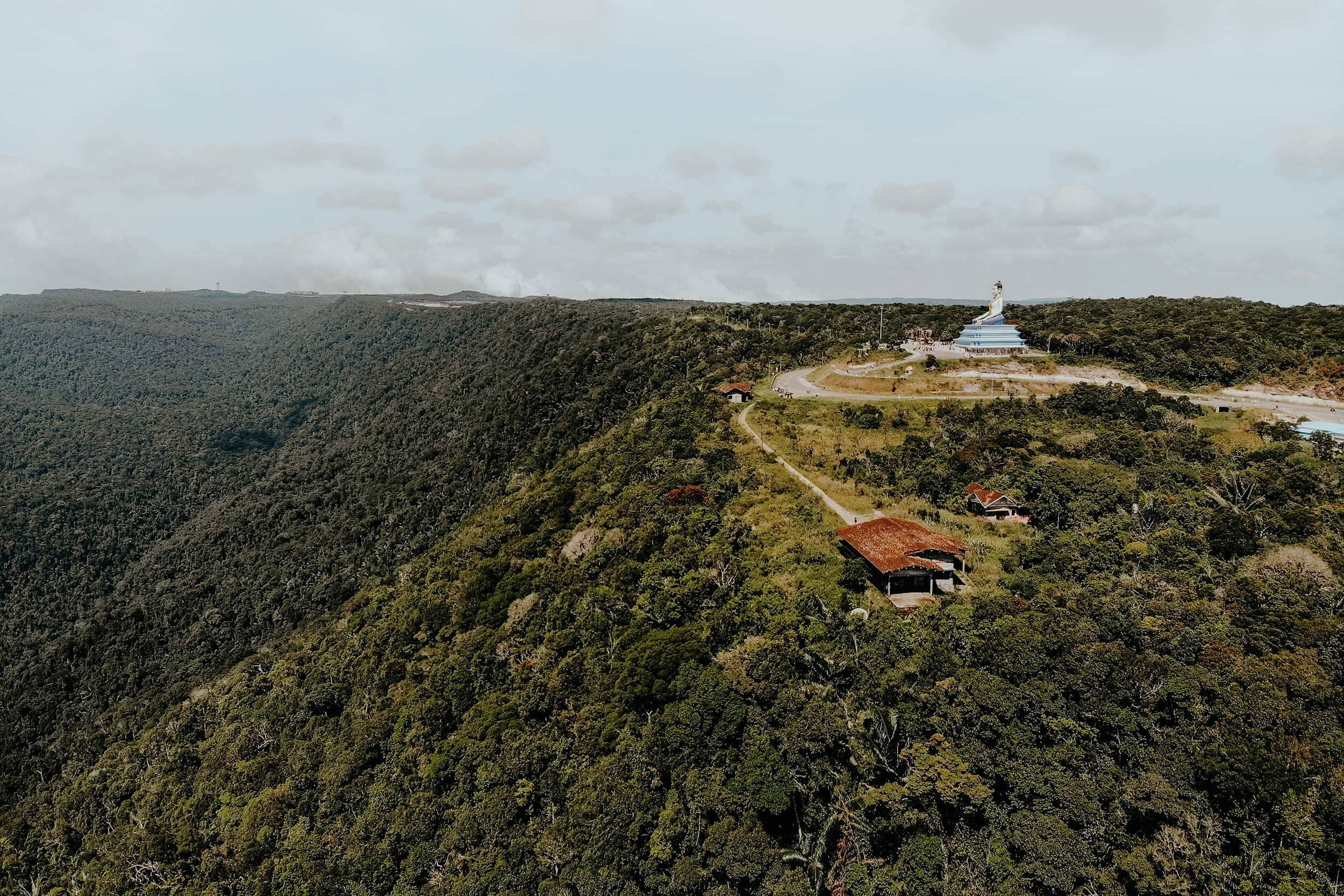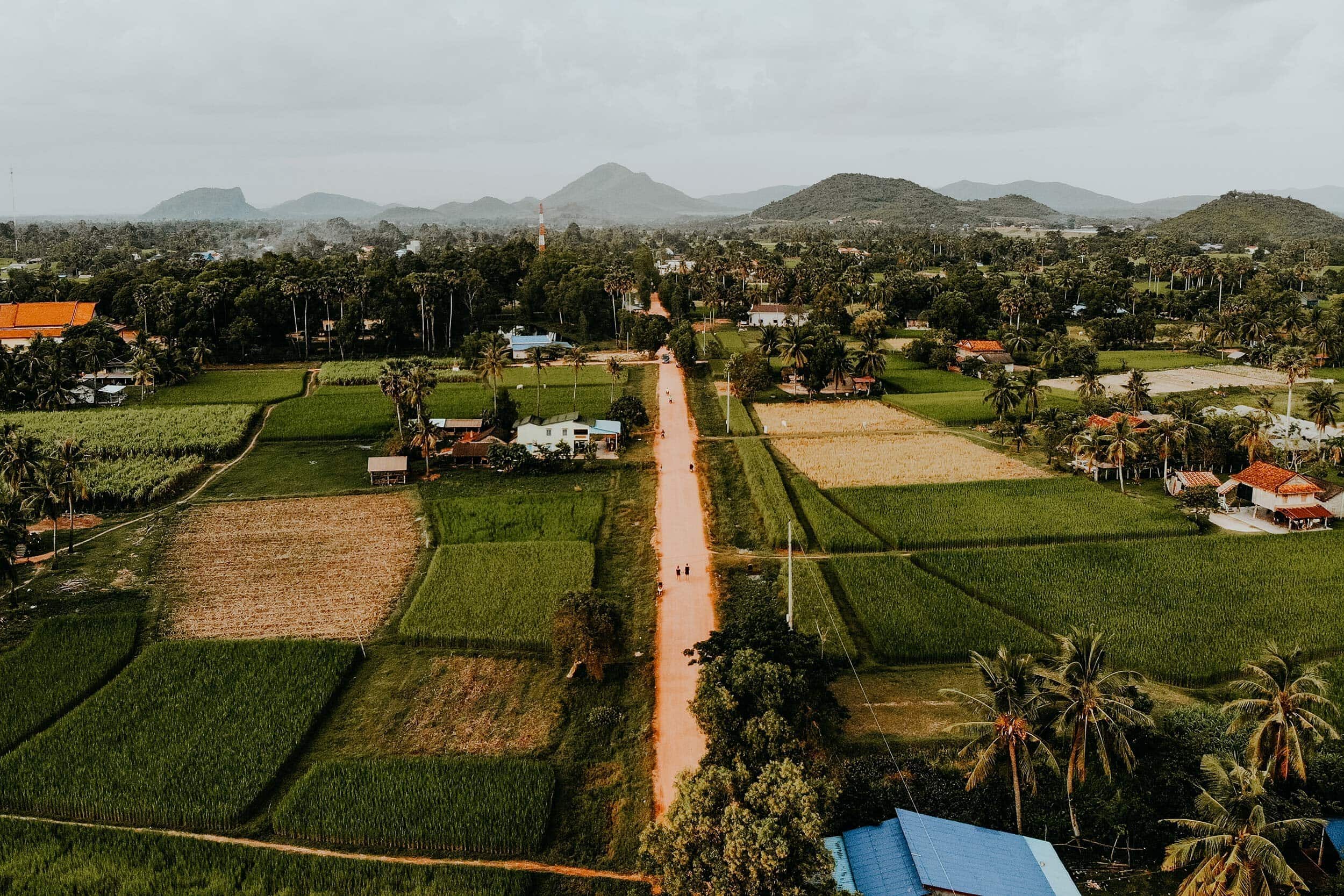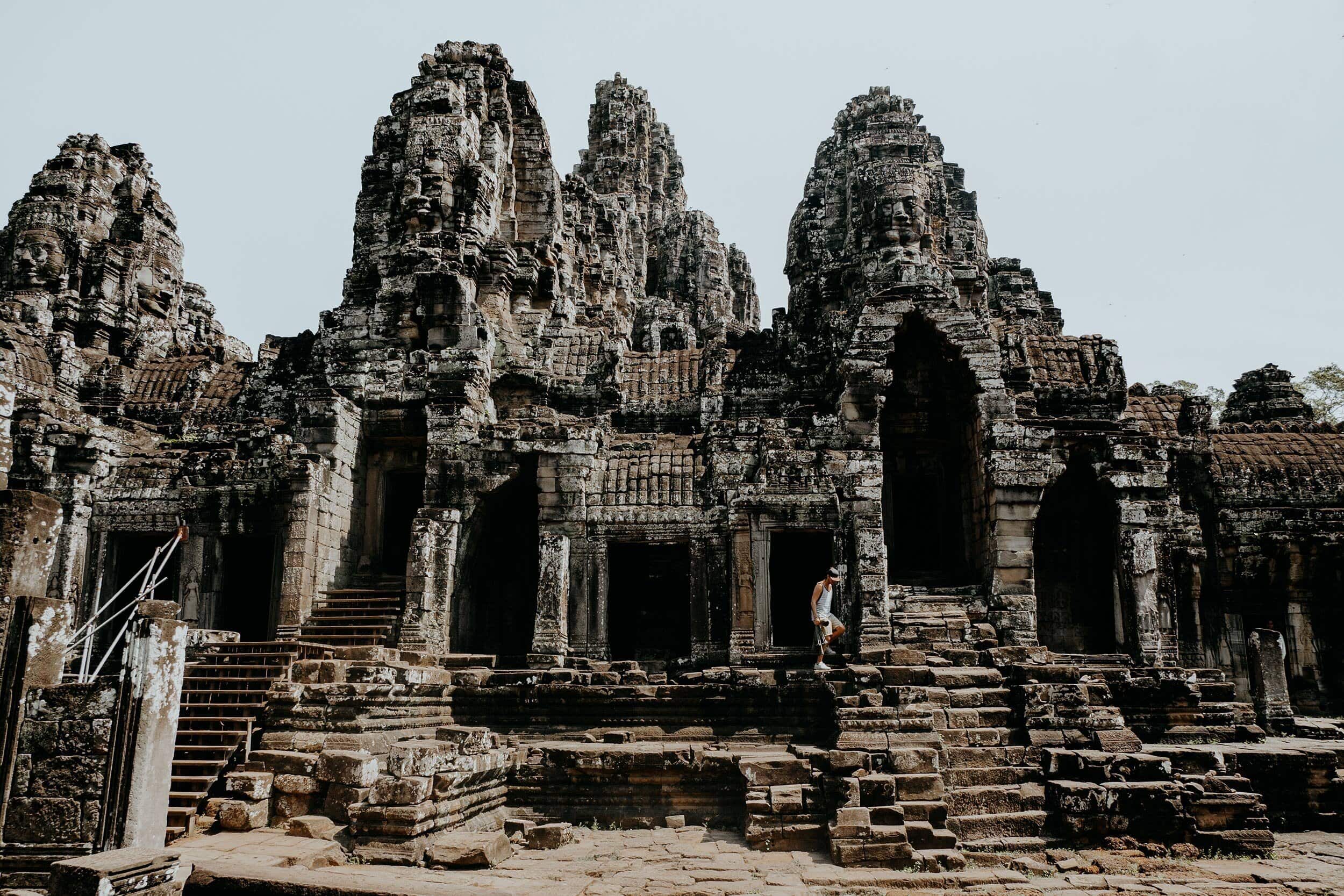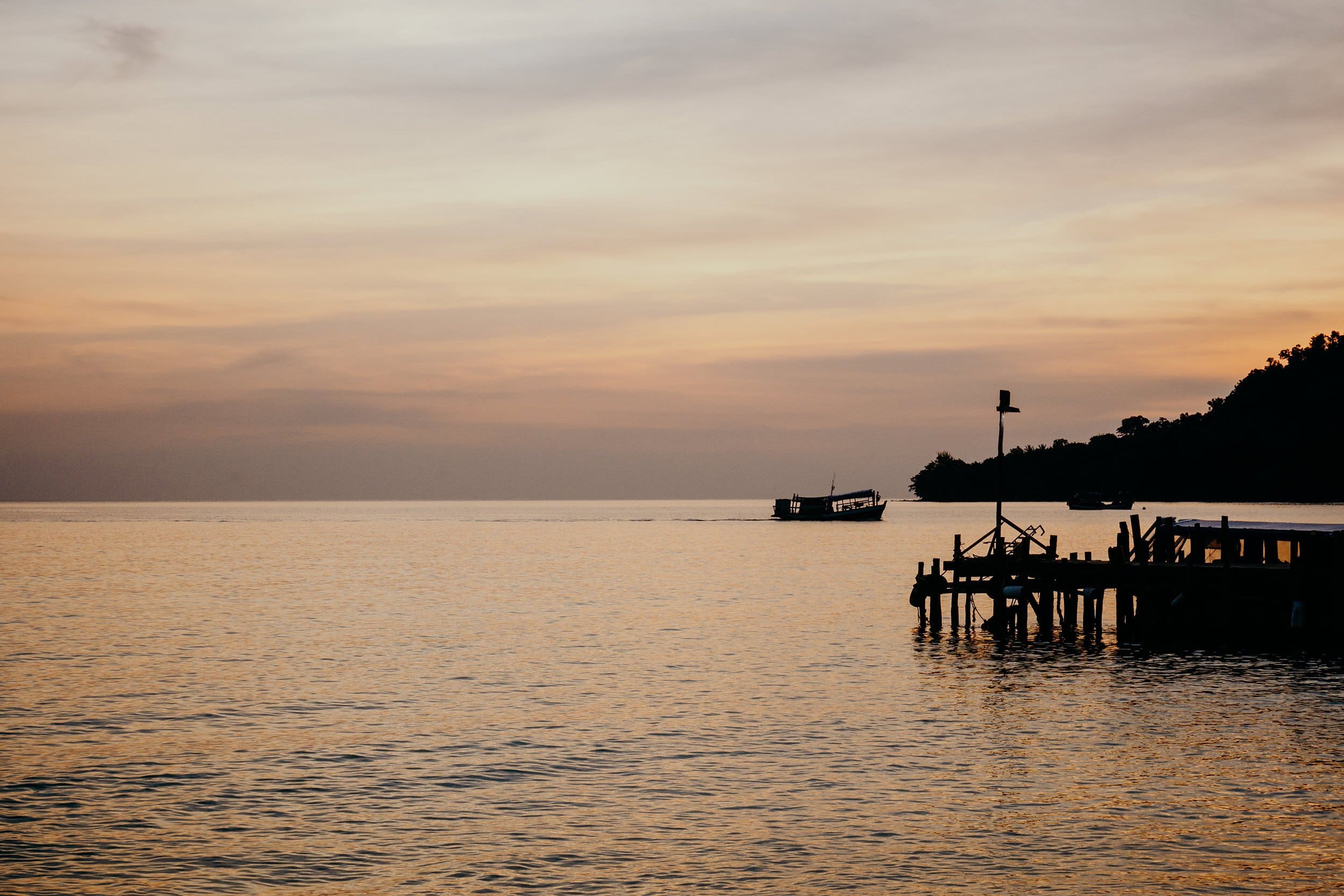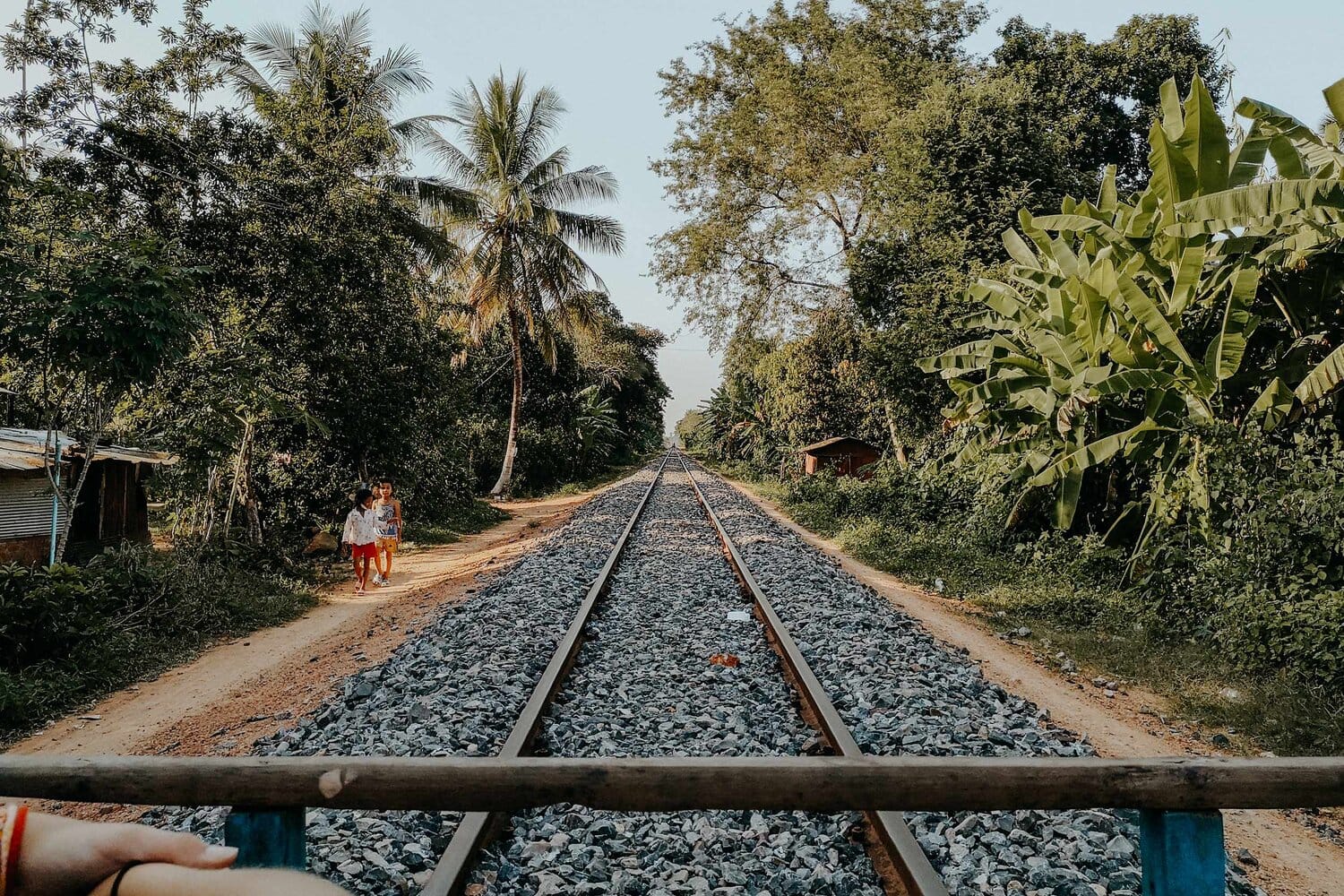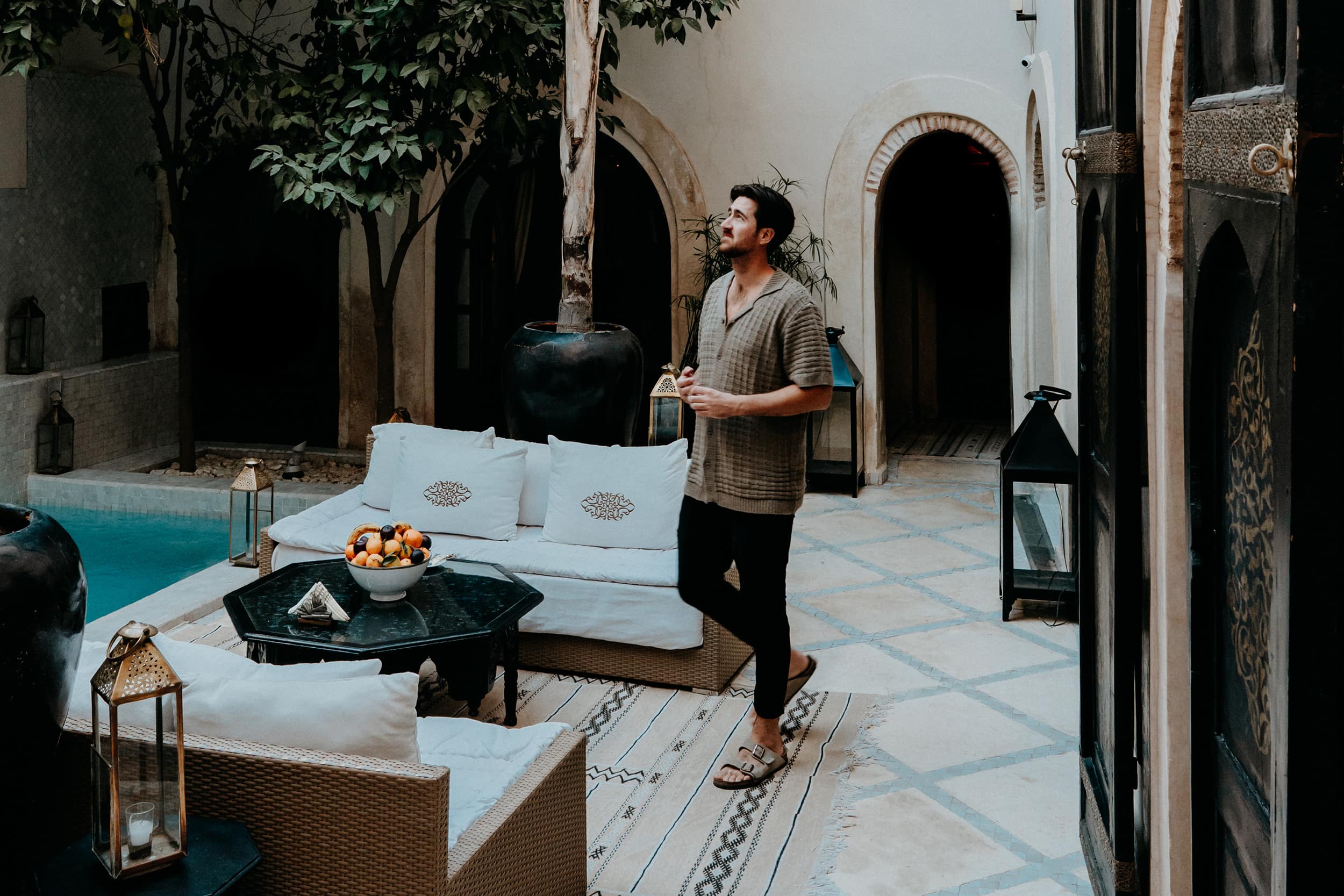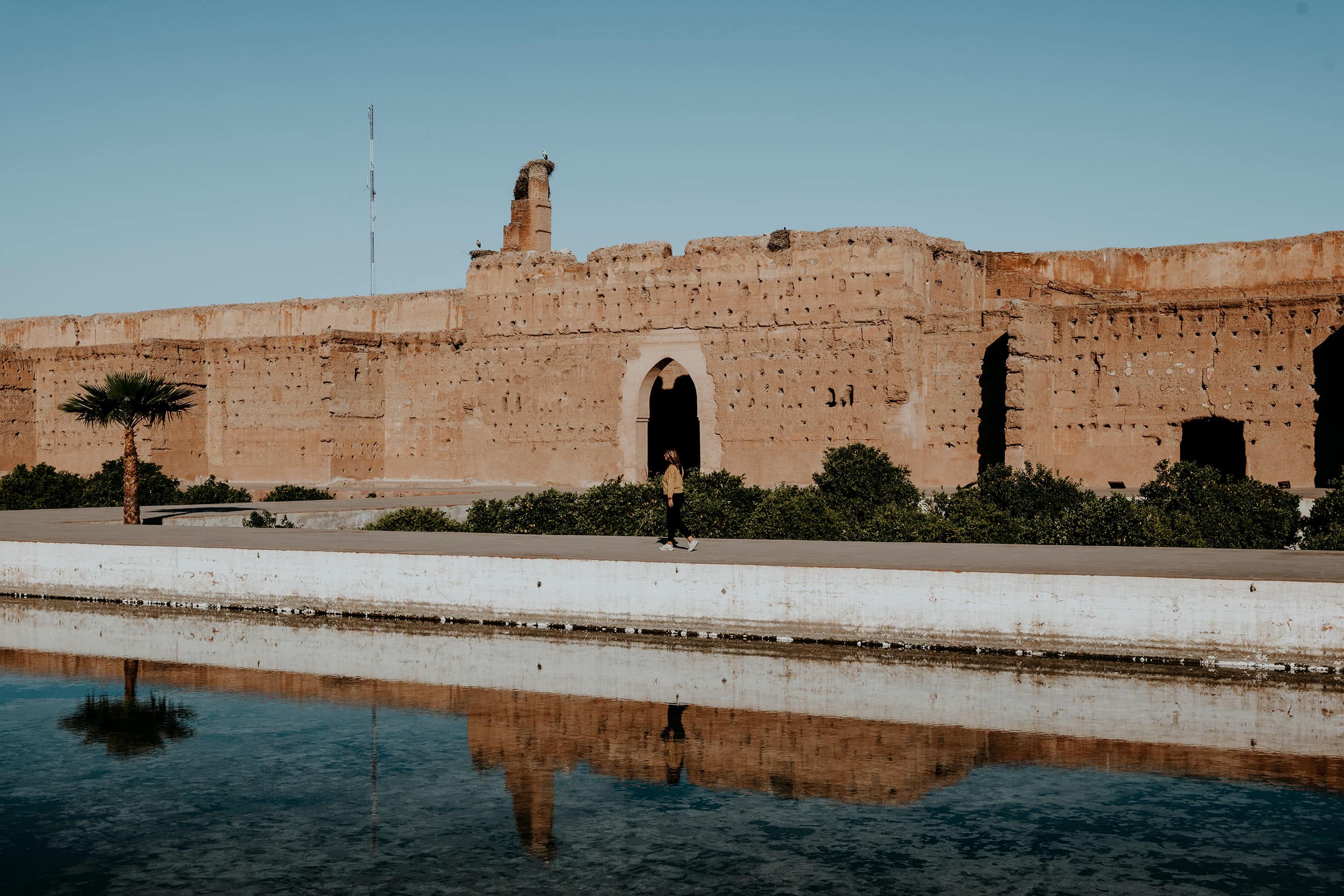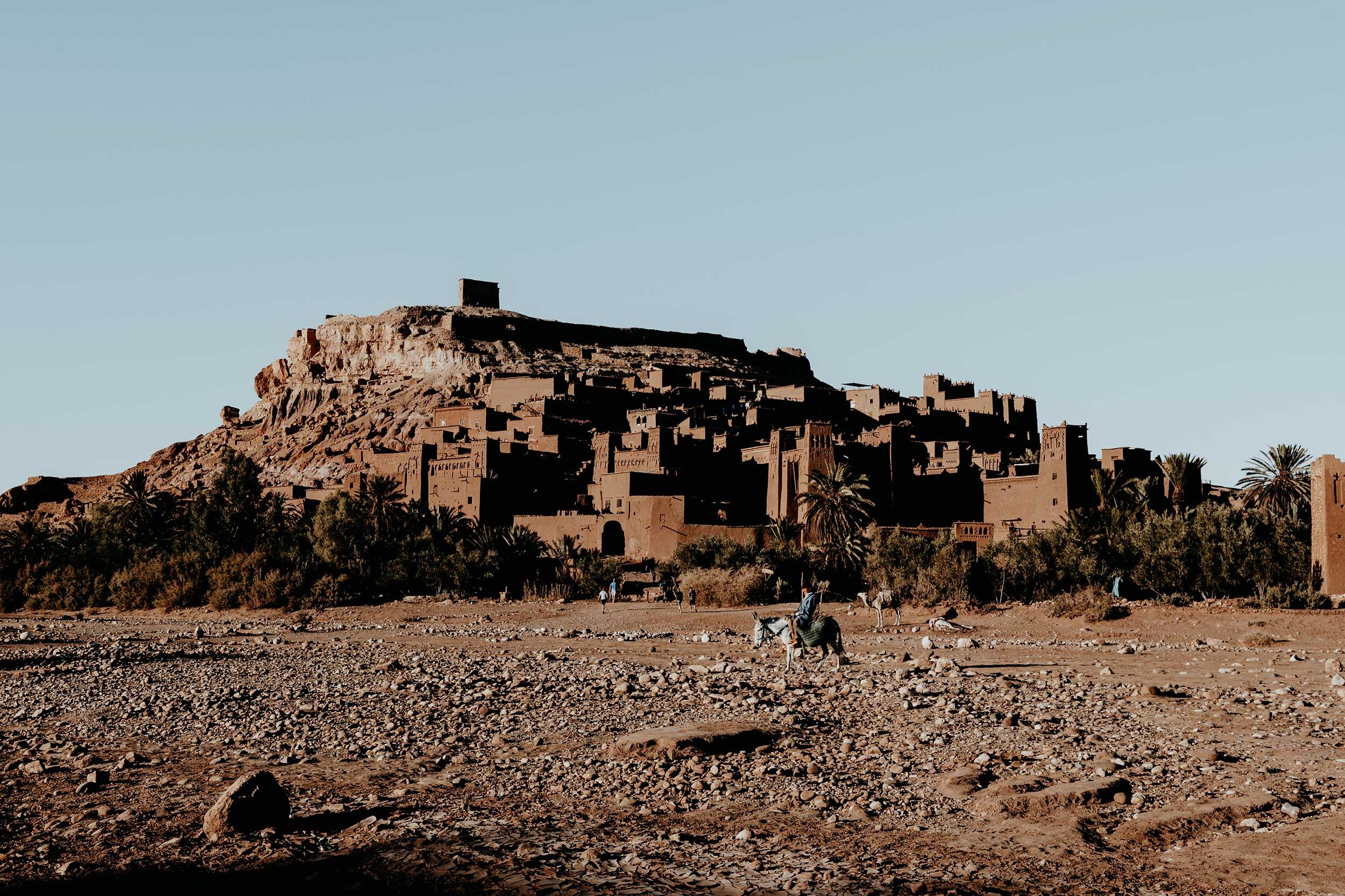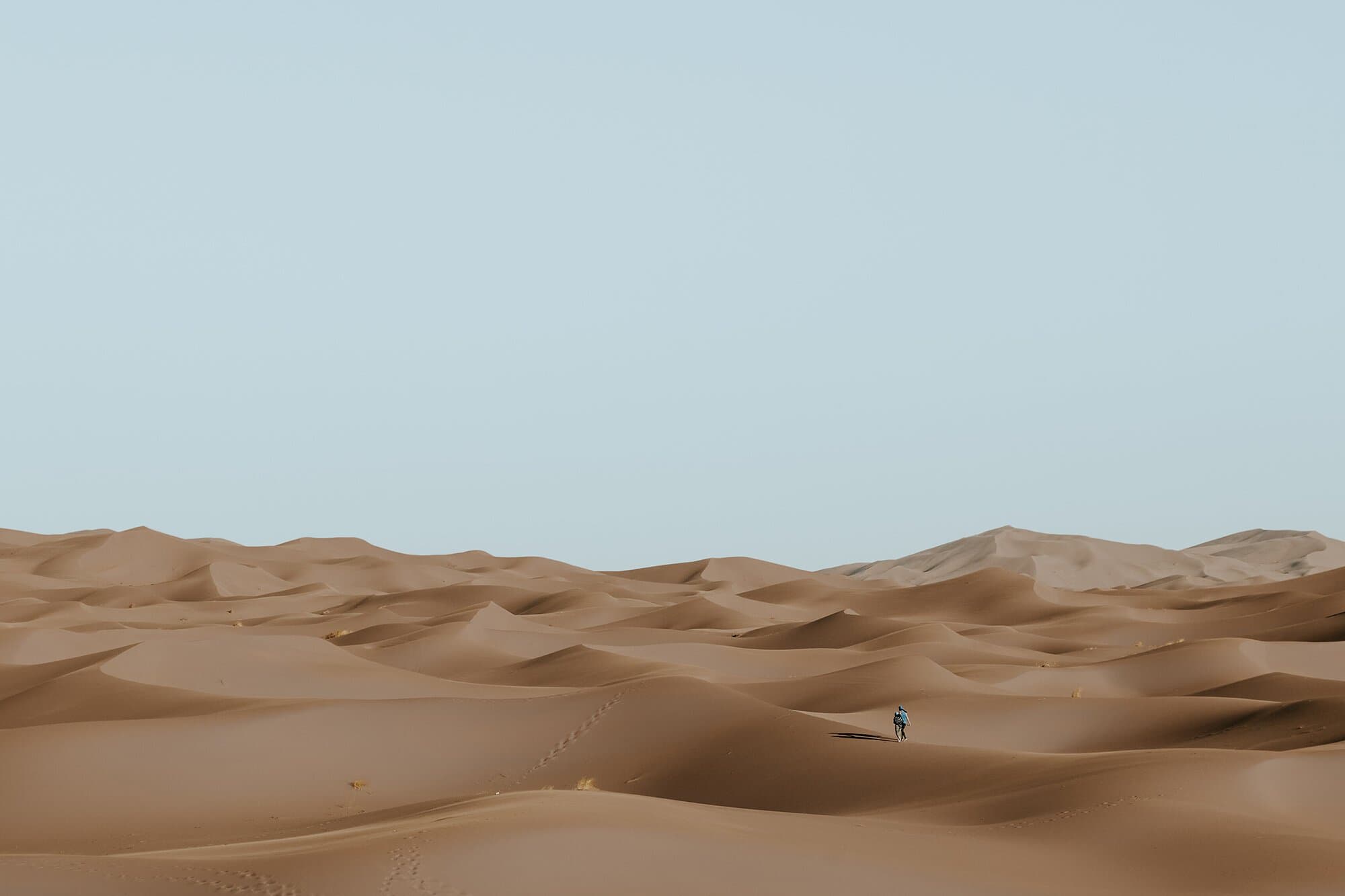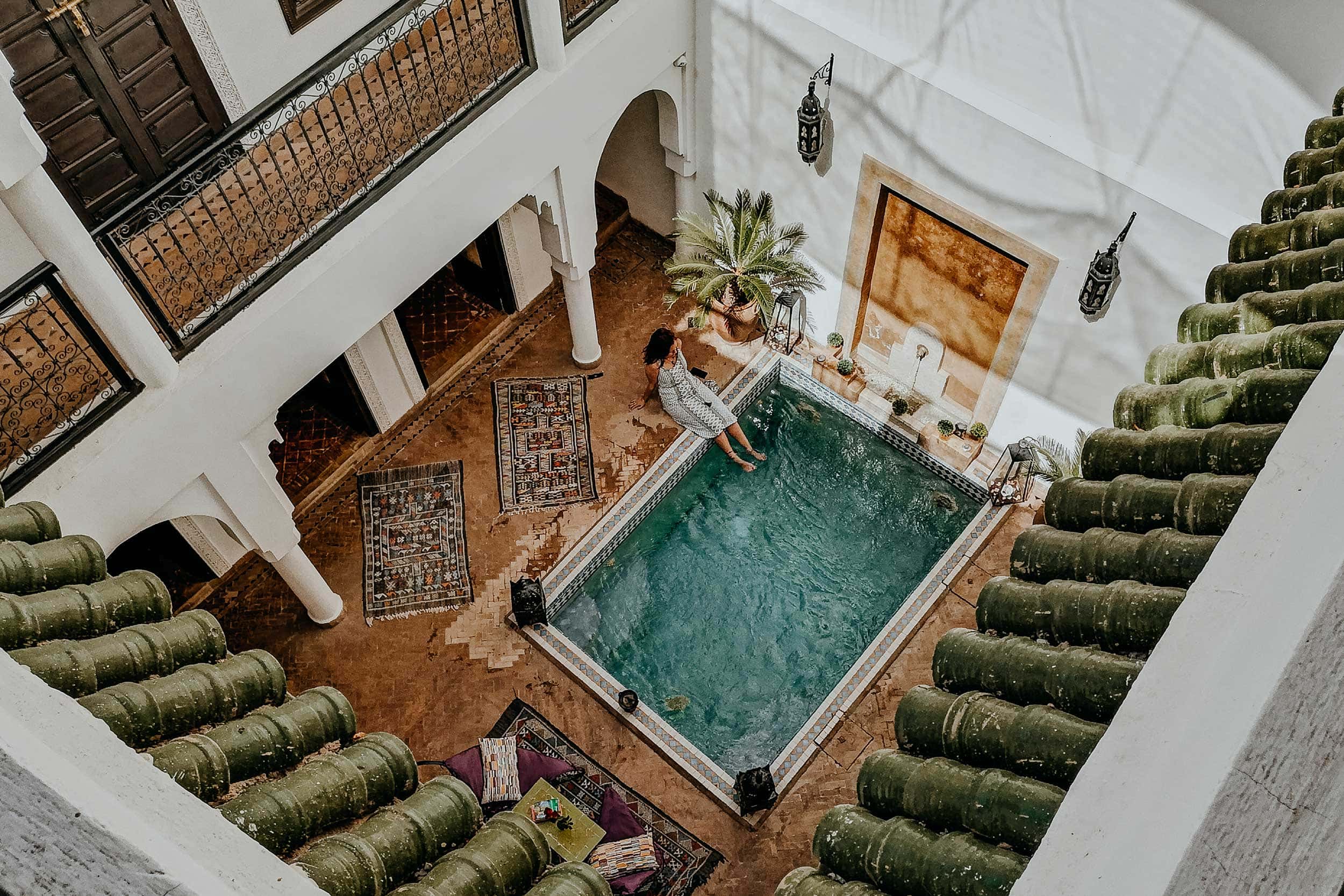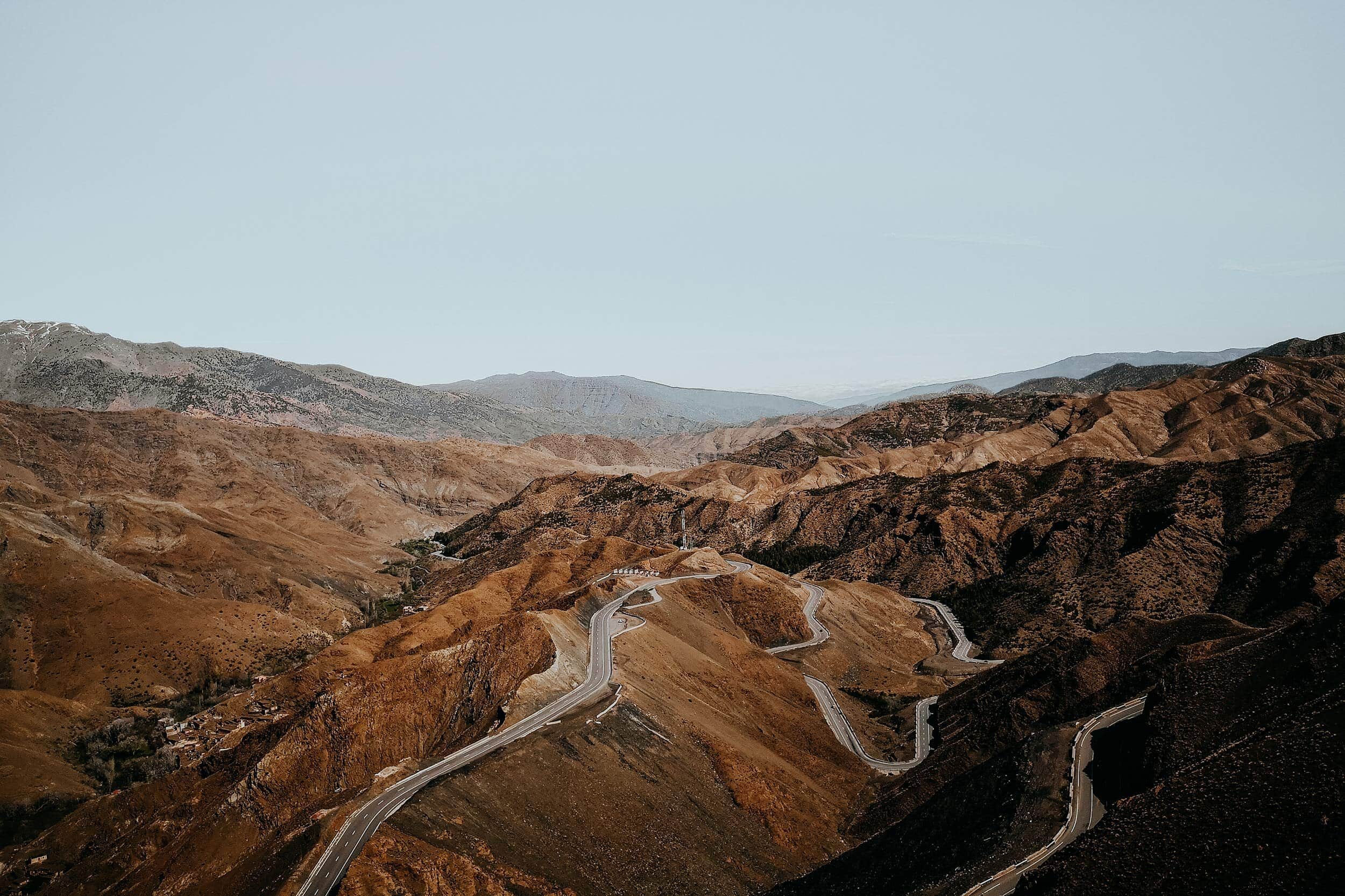A travellers guide to Petra, Jordan’s ancient Nabatean city
Planning to visit Petra, Jordan’s New World Wonder? Here’s my traveller’s guide to Petra, featuring what to see and do, where to stay, how to get there, first-hand travel tips, and more.
Only a few places on earth require zero introduction, the ancient city of Petra is one of them.
Whether it’s its listing as one of UNESCO’s New World Wonders, the myriad displays on your Instagram feed, its appearance in the movie Indiana Jones, or its dominant presence in the history books, I’m sure you’re familiar with this iconic ancient city in the heart of the Jordanian desert.
Though its prime days are now long gone, the ancient city of Petra remains a place of unparalleled charm, and believe me, seeing it in person for the first time is both mystical and astonishing.
Exceptional architectural masterpieces and ornate rock-cut facades set the tone for an unforgettable experience, while the unique rose-red coloured landscape and adventurous hiking trails make it even more phenomenal.
The complex itself is of tremendous size, and as the number one tourist attraction in Jordan, it shouldn’t come as a surprise that Petra is jam-packed from the moment they open its doors.
For that reason, I’ve put together this detailed guide to Petra, loaded with everything you need to enjoy this jewel of the ancient Nabatean world, including a few essential things to know before you visit.
A TRAVELLER’S GUIDE TO PETRA, JORDAN
WHERE IS PETRA, JORDAN
The outstanding archaeological site of Petra is situated between the rough mountain ridges that encircle Wadi Musa, a small town in southwest Jordan.
With nearly 1 million visitors annually, this New World Wonder is considered the number-one tourist attraction in the Hashemite Kingdom of Jordan.
A BRIEF HISTORY OF PETRA
Before you start exploring the incredible grounds of Petra, I believe it’s essential to learn about the ancient city’s intriguing history, so here’s a brief overview.
It is said, that the region of present-day Petra was first inhabited around 7.000 BC, as historians and archaeologists found traces that lead back to several Neolithic villages.
Around the 4th century BC, a nomadic Arab tribe named the Nabataeans reached the area, who in the following years decided it was time to leave their nomadic ways of living behind.
With incredible riches and a set of advanced engineering skills, the Nabataean people started building their settlement, that many historians believe to be one of the most sophisticated ancient cities ever made.
From that moment on, Petra became the capital of the Nabataean kingdom and prospered into a major trading hub for luxuriant goods, such as incense from Arabia, silk from China and spices from India. At its peak, more than 30.000 people called Petra their home.
At some point, the international trade routes shifted, and along with it the power, wealth and reputation of the Nabataean kingdom and its people. This significant change left Petra vulnerable to the Romans, who eventually took over the rock-cut city in the year 106 AD.
Under Roman rule, Petra thrived once again, and in addition to the utterly fascinating rock-cut buildings of the Nabataeans, the Romans added several new structures to the city.
Unfortunately, due to two earthquakes in 363 and 551, Petra was partly ruined, which resulted that it became abandoned by its people, and eventually forgotten.
Though the local Bedouin people knew exactly where it was, ‘the lost city of Petra’ had been kept secret to the rest of the world for over a thousand years.
It wasn’t until Swiss explorer Johann Ludwig Burckhardt rediscovered it in 1812, that the ‘rose-red city is half as old as time’ was put on the map of those from the western world.
Today, Petra is among Unesco’s New World Wonders with nearly 1 million visitors annually.
PETRA TICKETS | ENTRANCE FEE 2021
At the moment of writing, there are three ticket options available for Petra, and the one you choose depends on the number of days you wish to explore the rose-red city.
It is worth mentioning that entrance to Petra by Night is not included in the above tickets. These tickets need to be purchased separately at a cost of $24 per person. Also, kids under the age of 12 have free entrance to Petra.
The options include:
One-day ticket | An excellent option if you’re short on time, but keep in mind that it’s stressful, if not impossible to see Petra in one day. Cost $70.
Two-day ticket | If you’re keen to explore Petra in a more relaxing manner, I would highly prefer this option. I’d chosen this option and had enough time to visit the highlights and follow some hiking trails. Cost $78.
Three-day ticket | Petra is such an impressive place, that it’s easy to see why one would spend three days here. This option is perfect If you wish to uncover Petra thoroughly, with the flexibility to do it at your own pace. Cost $85.
One word of caution, your passport is required at all times.
PETRA TICKETS ONLINE | THE JORDAN PASS
Though it is easy to purchase your entrance ticket upon arrival at the Petra Visitor Centre, I believe it’s better to acquire a Jordan Pass before flying into the country.
Not only does the Jordan Pass grants entrance to Jordan’s most popular highlights, including Petra, but it also waives the visa fees for those planning to spend more than 4 days in Jordan.
I applied for the Jordan Pass in advance, and thought it was great value for the money – plus I was able to skip the ticket line at the Petra Visitor Centre – winner!
For more information, availability, and applying, make sure you visit the iVisa website.
THINGS TO SEE IN PETRA
With hundreds of impressive structures, dazzling viewpoints and a number of adventuresome hiking trails dotted throughout Petra, it’s hard to imagine that 85 percent of this ancient Nabataean city is still hidden under the dusty soil.
Though it sounds overwhelming, it is actually quite straightforward to explore the valley, with one well-mapped-out walking route from the Petra Visitor Centre to the Monastery.
On top of that, there are several alternative trails that take you to the lesser-known structures, as well as panoramic viewpoints offering incredible vistas of Petra and surrounds.
Also, I highly advise having realistic expectations – the Petra complex is simply too extensive to see in its entirety.
That said, let’s get into the highlights of Petra.
THE SIQ
It is inevitable that the first part of your Petra adventure starts by walking through the Siq, a narrow 1.2-kilometre long gorge that slowly guides you into the hidden rose-red city.
Take it from me, it’s a sensational experience to follow the path between the towering natural rock walls, knowing that Petra’s famous Treasury could show up at any given time.
At some point, the gorge narrows to a width of roughly 2 metres, while it is flanked by towering rock walls. Given the light still enters the Siq from above, these incredible circumstances create loads of awesome photography opportunities.
The Siq is also the place to see the Nabataean’s progressive water system, leading water from Wadi Musa into the city via small channels that are carved directly out of the rock walls.
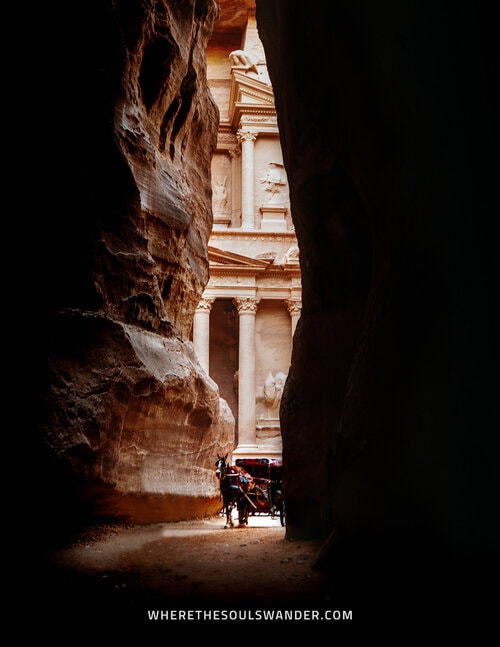
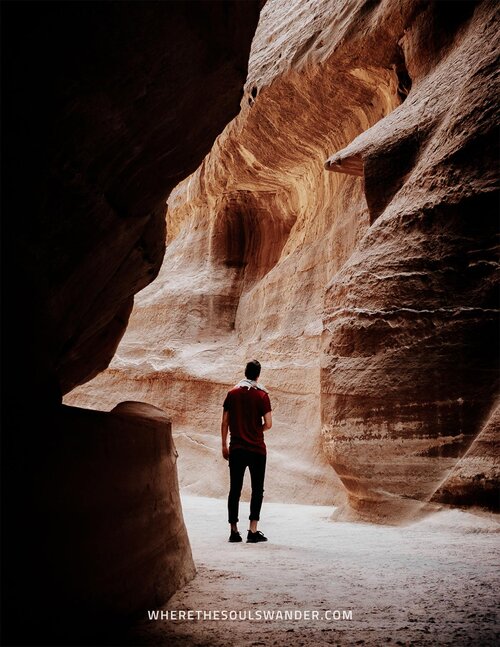
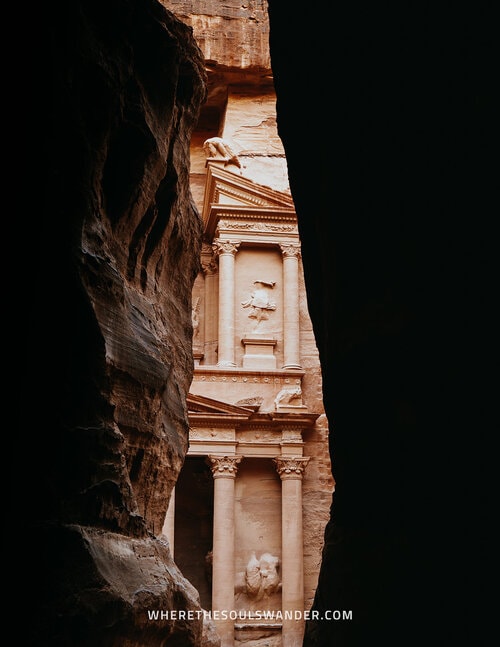
THE TREASURY | AL-KHAZNEH
There it is, Petra’s absolute centrepiece – the otherworldly Treasury, locally known as Al-Khazneh.
Seeing the famous facade of the Treasury through the narrow crack of the Siq, is in many ways a once-in-a-lifetime travel experience.
Cut out of the rose-red sandstone rocks, the Treasury is an impressive 39-metre high structure that is said to be the mausoleum of Nabatean King Aretas IV, who ruled Petra during the 1st century AD.
Legend has it that an Egyptian pharaoh hid his treasure in the urn on the upper part of the facade, which resulted in the name; Al-Khazneh – Treasury of the pharaoh.
At present, the urn is marked by rifle shots, given the local bedouin people hoped that the believed ‘treasure’ would eventually fall out of the facade.
For an unforgettable experience, make sure you’ll arrive at the Treasury as one of the first – I know, waking up early on holidays sounds like a no-go, but believe me, it’s totally worth it!
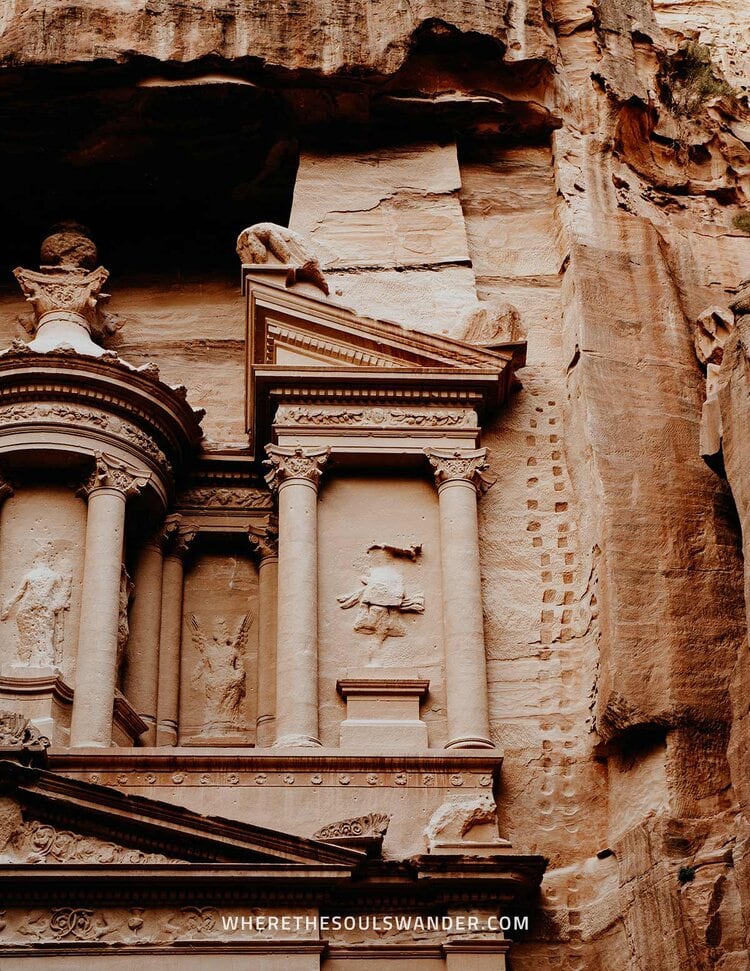
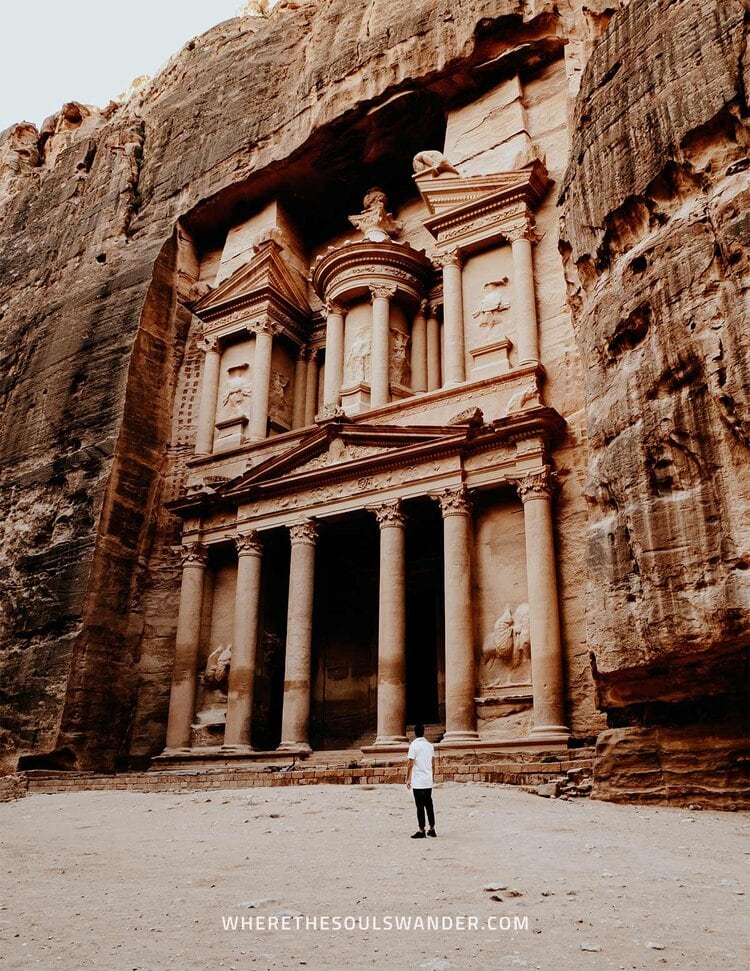
THE STREET OF FACADES
Running straight through the heart of Petra is the Street of Facades, a picturesque street that is lined with more than 40 rock-cut tombs and houses.
At some point in history, this street became the epicentre of Petra, and it’s pretty cool to imagine how the atmosphere must have been back in the days.
Today, the Street of Facades is known as the main tourist route in Petra, as it connects the Treasury with Hadrian’s Gate.
Adjacent to the street are some of Petra’s best landmarks, including the Royal Tombs – the Urn Tomb, the Silk Tomb, the Corinthian Tomb and the Palace Tomb, as well as the Petra Theater.
THE NABATEAN THEATER
Situated on the left side of the Street of Facades lies the Nabatean Theater, a time-worn theatre that was built more than 2000 years ago.
Though it is often assumed that the theatre descends from the Romans, it is actually built under Nabatean rule – which is reflected in the distinctive rock-cut architecture for which the latter is known.
The initial theatre had a capacity of 3000 seats, but the Romans eventually enlarged it to 8500, which makes it one of the largest theatres in Jordan.
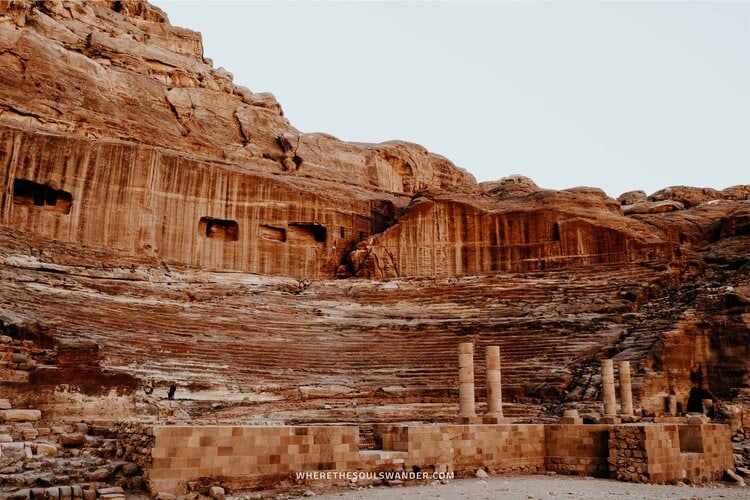
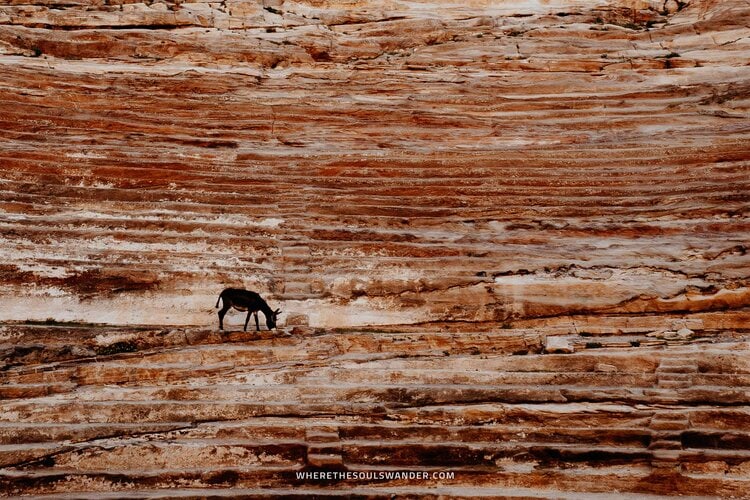
THE ROYAL TOMBS OF PETRA
Next in line are the Royal Tombs, a series of four unique tombs; the Urn Tomb, the Silk Tomb, the Corinthian Tomb and the Palace Tomb.
What makes the Royal Tombs one of the most impressive things to see in Petra, is that these four tombs cover the entire side of a humongous mountain.
And though the Royal Tombs look stunning from afar, I would also recommend visiting each tomb individually if you have the time.
Do note that all four tombs are positioned on an elevated platform, and can only be reached by following the steps up on the right side of the Street of Facades.
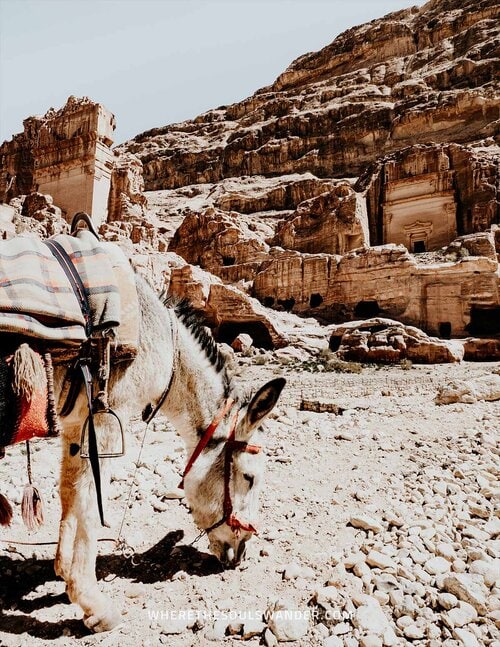
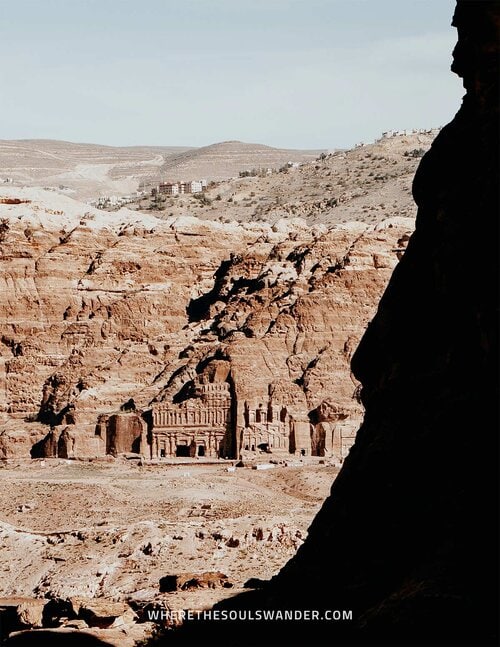
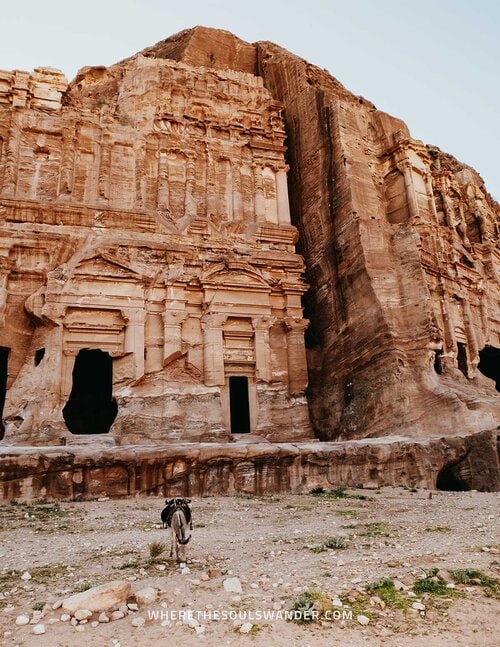
THE MONASTERY | AD-DEIR
Despite being the furthest away from the Petra Visitor Centre, the Monastery is actually one of the most popular monuments in the complex, and given its incredible appearance, this is no surprise.
Hidden high in the mountains of Petra, this incredible place is reached by following the rocky 800-steps up, which should take no longer than an hour if you have hiking experience.
Following the scenic hike up, you’ll be welcomed by a stunning rock-cut facade (both in size and looks), and seeing it up close and personal, is in many ways something to look forward to.
In addition to the Monastery’s impressive facade, the area also houses several awe-inspiring panoramic viewpoints, as well as an excellent restaurant to grab some well-deserved refreshments.
For the best perspective and photography possibilities, make sure you climb the viewpoints behind the restaurant too.
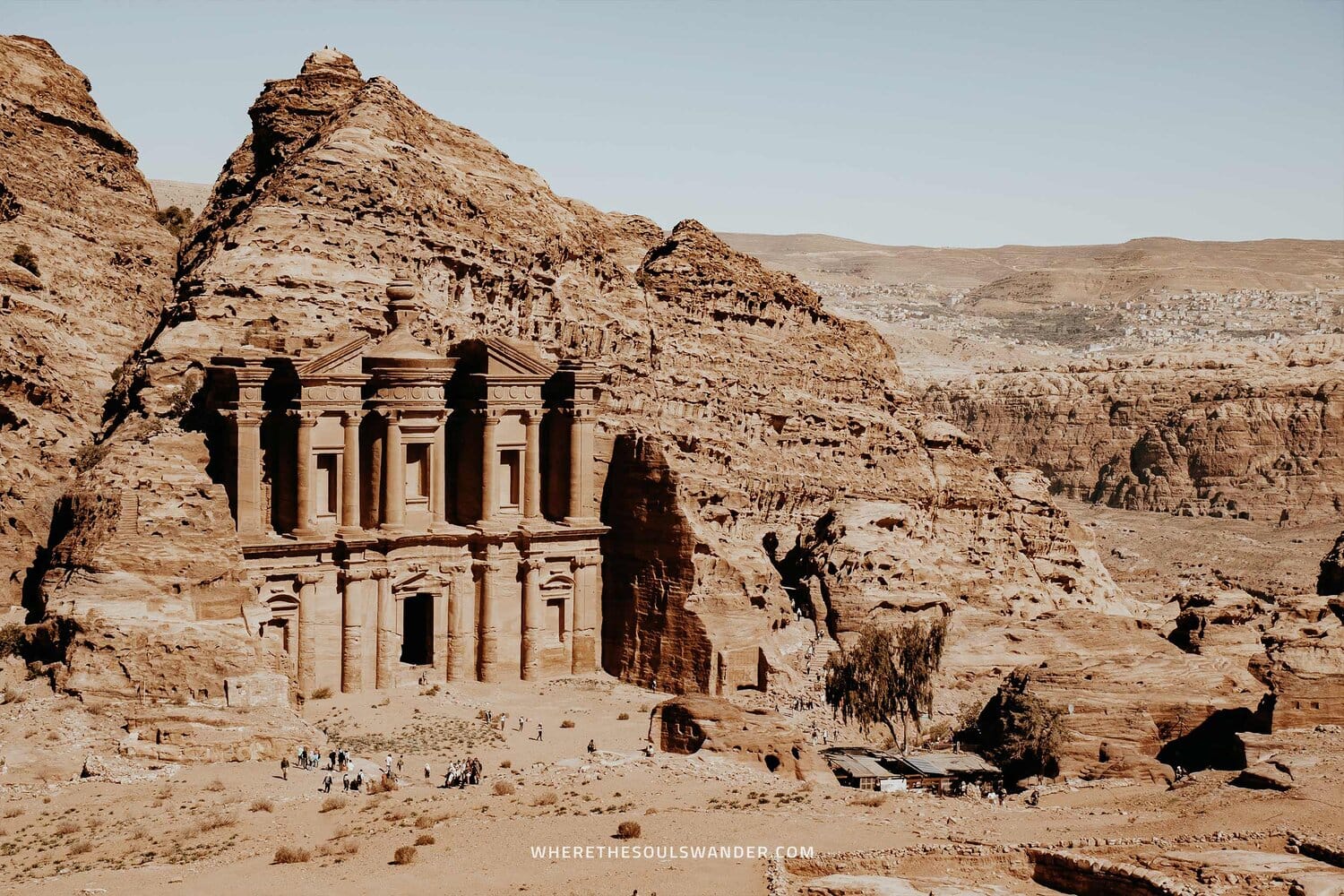
THE GARDEN TEMPLE
Situated in a scenic valley just off the popular main trail, the Garden Temple is actually a bit of a hidden gem.
One of my favourite moments in Petra was exactly here, enjoying a cup of fresh mint tea while a local Bedouin played me some traditional melodies.
While it requires somewhat more effort to get to the Garden Temple, it was one of my favourite places in Petra, given the authentic atmosphere and only a handful of other people exploring it.
From here, you can also follow the stairs up in the direction of the High Place of Sacrifice.
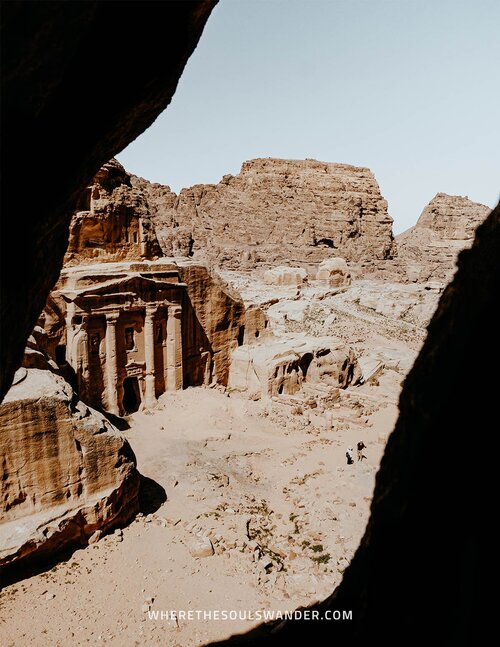
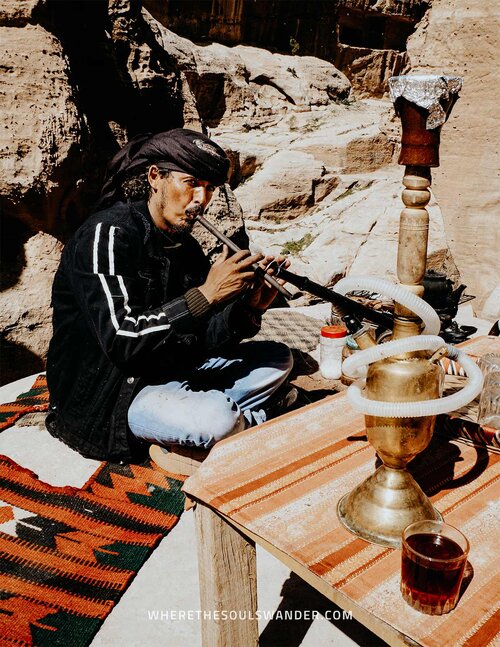
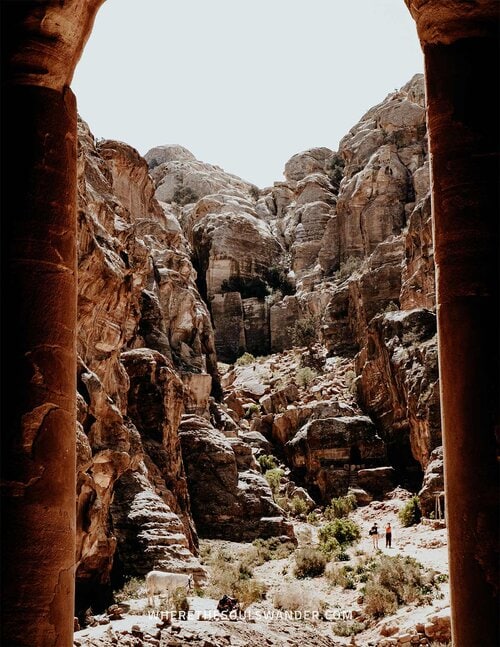
AL-KHUBTHA TRAIL | THE TREASURY FROM ABOVE
If you’re keen to see the iconic facade of the Treasury from above, the adventurous Al-Khubtha Trail should definitely be on top of your list of things to do in Petra.
Starting at the Street of Facades, the Al-Khubtha Trail takes you along the Royal Tombs of Petra, before you climb the steep stairs to the summit of the Jabal Al-Khubtha.
From here you’ll have stunning panoramic views of the Petra theatre, the Street of Facades, the Colonnaded Street, as well as the surrounding valleys of Petra.
After taking in the views, turn left into the valley, where a sketchy downhill trail takes you to the most iconic viewpoint in the whole of Petra – believe me, I’m not exaggerating.
At the end of the trail, you see a small bedouin hut that serves as a cafe. Though the costs are inflated here, it is quite an experience to enjoy the epic view with a cup of tea or a refreshing juice.
One thing worth mentioning is that the Al-Khubtha Trail runs in one direction, meaning you have to hike the same way back.
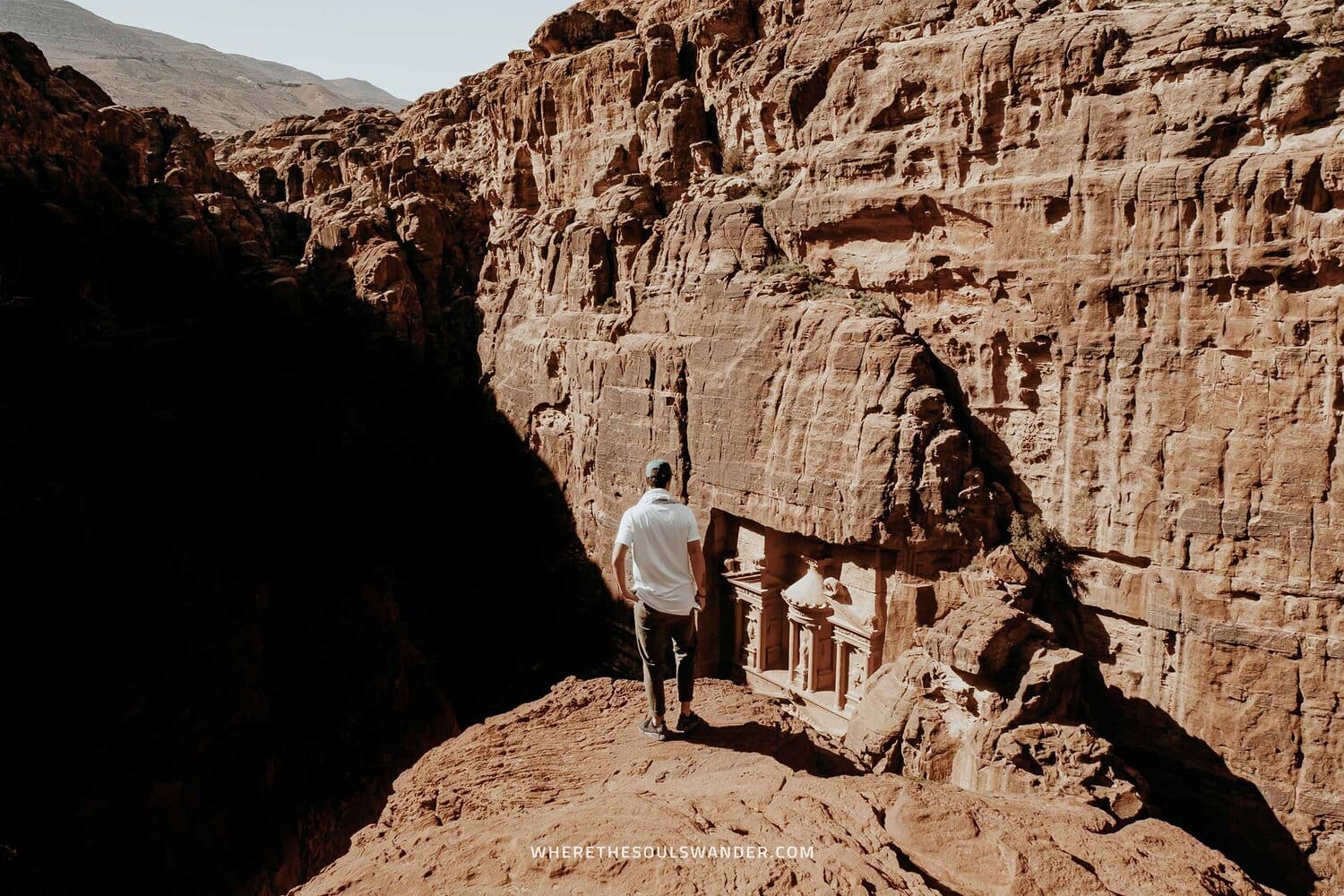
ADDITIONAL THINGS TO SEE IN PETRA
As you probably already know by now, Petra is huge in size, meaning you’ll have to plan your visit thoughtfully if you want to make the most of it.
While exploring the above-listed highlights will easily consume two days of your time, there are a few additional landmarks that shouldn’t be left unnoticed.
So if you have enough time in the complex, consider visiting these ones too:
HIGH PLACE OF SACRIFICE
Situated atop the towering Jebel al-Madhbah mountain is the High Place of Sacrifice, a holy area that, as the name might suggest, was used for sacrifices and spiritual ceremonies.
These days, the High Place of Sacrifice is the most accessible of Petra’s high places, and reaching the summit takes only 45 minutes.
With no shelter from the sun during the hike, I’d advise visiting early morning or late afternoon.
PETRA BY NIGHT
In addition to your daytime adventures in Petra, it is also possible to behold the iconic Treasury under the starry Jordanian sky.
Three nights a week, Petra is all about its popular light show performance, when local bedouin people make music and tell stories in front of the enlightened Treasury.
While I totally understand that a walk through the candle-lined Siq is a magical experience to many, the overall experience just wasn’t for me.
For those of you that do want to visit Petra by Night, it is held on Monday, Wednesday and Friday from 20:30 to 22:30, and tickets can be bought at most hotels for 17 JOD ($24) per person.
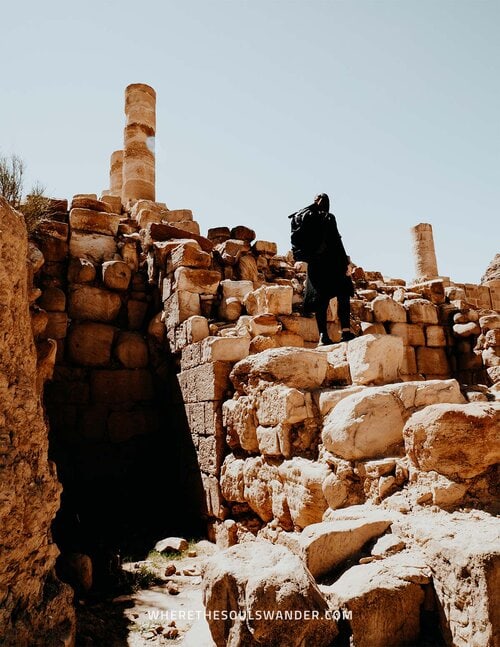
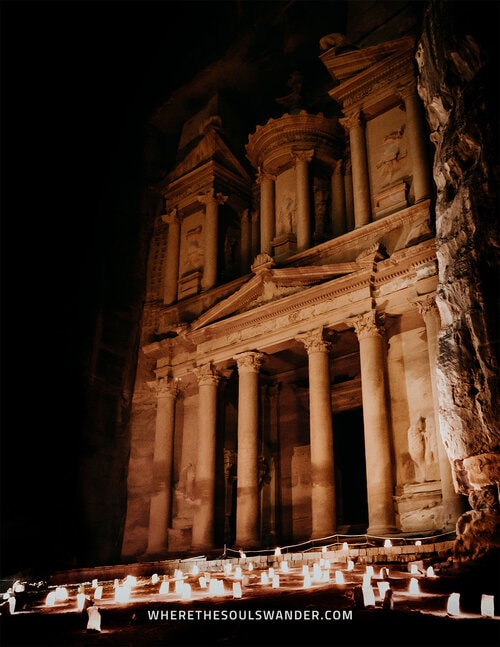
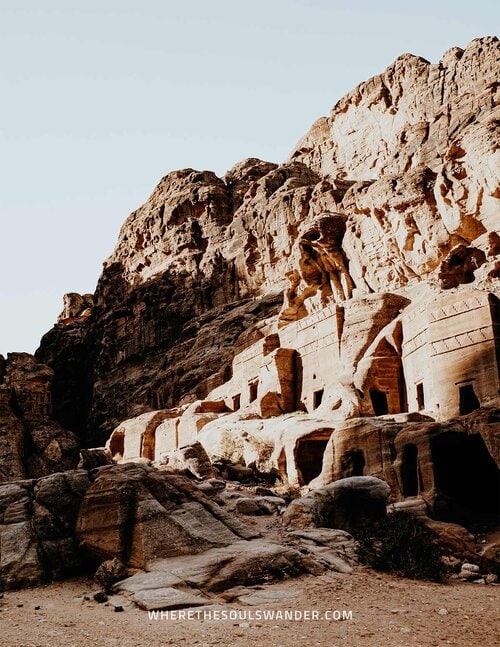
WHERE TO STAY IN PETRA | WADI MUSA
It is good to note, that all explorations in Petra begin in Wadi Musa, and for that reason, this cosy little town is where you want to base yourself.
Right, Wadi Musa is only a small town, but when it comes to accommodation, you’ll have no problem finding an option that caters to your travel preferences and budget.
To help you find a place that suits your needs, I’ve listed some of my personal favourites below, one of which is marked – this is the place where I stayed.
Town Season Hotel | If you’re looking for comfort without breaking the bank, Town Season’s is for you. Located within only 20 minutes of the Petra Visitor Centre, this hotel offers well-designed rooms, comfy beds, a great in-house restaurant, and an excellent breakfast spread. Deluxe twin rooms at just $67 a night, make this place an absolute bargain.
+ Anbat Midtown Hotel | Located at the doorstep of Wadi Musa’s lively cafe and restaurant scene, this newly renovated hotel offers air-conditioned private rooms, great breakfast, and several spacious common area’s, including a rooftop terrace with a view. Add a free shuttle service to the Petra Visitor Centre, and you understand why I stayed here.
Petra Guest House Hotel | Those looking for something more luxurious might want to check out this one. Located right next to the Petra entrance, this highly-rated hotel brings comfort and hospitality to a whole nother level. Not only do they offer stylish air-conditioned rooms, a large garden, and incredibly friendly staff, but they also have an authentic cave bar set within a 1st-century Nabatean house. If you’re looking for a unique hotel experience, I highly believe this is your best option.
Alternatively, search for accommodations in Wadi Musa on booking.com.
BEST TIME OF YEAR TO VISIT PETRA
Petra is situated in the vast desert landscape of Jordan, meaning it’s somewhat challenging in terms of the weather.
Given Jordan lies in the Middle East, it is good to note that it becomes sweltering hot during the peak summer months, yet freezing cold during the winter months.
Whilst Petra is open every day of the year, I believe the best time to visit is from early March to late May, and from early October to late November.
By planning your trip outside the peak summer months, you’ll steer clear of the intense summer heat, while you also share your experience with significantly fewer crowds.
However, the early mornings and evenings are often still pretty chilly in contrary to the pleasant day temperature. So make sure you bring at least one pair of trousers and a comfy hoodie!
BEST TIME OF DAY TO VISIT PETRA
Let’s get right to it, the best time to visit Petra is early in the morning, or in the late afternoon.
Not only do you have better lighting for photography during these times, but there’s also notably fewer people around the park.
Petra itself is open every day from 06:00 till 18:00 during the summer months, and from 06:00 till 16:00 during the winter months.
Given most of the large groups and guided tours arrive at Petra around 08:00, I would highly recommend waking up early for this one – believe me, it is more than worth it!
HOW TO GET TO PETRA
Given Petra is the most popular tourist attraction in the country, you’ll find a variety of transportation options to reach Wadi Musa.
To help you choose the option that works best for you, I’ve listed three options below – including the pros and cons of each.
CAR | Definitely, the most scenic way to get to Petra, Wadi Musa is by renting a car, which takes you through a set of rough and otherworldly landscapes along the way.
Another upside about driving in Jordan is the fact that most of the roads are actually in great condition, plus it is pretty cheap to fill up your tank.
Also, I believe that Jordan is one of the world’s best road trip destinations, meaning this option is obvious – make sure you check my Jordan road trip itinerary too.
For car rental in Jordan, I highly recommend Rentalcars.com. They offer brilliant service, additional insurance options (which is not an unnecessary luxury in Jordan), and a wide selection of cars to choose from. Prices and availability here.
GUIDED TOUR | Though I wouldn’t join a guided tour of Petra myself, it is actually quite a good option for those with limited time in the country.
Also, it is possible to visit Petra on a day trip from several cities in neighbouring Israel, including Eilat, Tel-Aviv and Jerusalem.
If a guided tour sounds interesting to you, I recommend booking one of the following options before arriving in Jordan.
Do keep in mind that some of the tours do not include the entrance fee to Petra itself.
Petra Full-Day Private Tour from Amman | This full-day private tour of Petra takes in all the major sights and includes an English speaking driver that picks you up at your Hotel in Amman.
Petra Full-Day Guided Tour from Eilat | Discover the incredible history of Petra with an expert guide by joining this full-day private or shared tour from Eilat – entrance fee and transport included in the price. Additional cost includes Border fees ($65) and visa fee ($60).
Petra, Jerash and Amman: 2-Day Tour from Jerusalem | This one is for those that wish to uncover the treasures of Jordan on a 2-day trip from Jerusalem, Israel. The tour includes transport, a well-spoken guide, two meals a day and the entrance fee to Petra and Jerash. Additional cost includes Border fees and visa fee (around $101 per person).
BUS | Since public transport in Jordan is limited, I would not necessarily recommend the use of it.
However, this doesn’t mean that it’s impossible to get to Petra by bus, it is Jordan’s number one tourist destination after all.
For those looking to visit Petra from Amman, JETT is a great private bus company that runs between Amman and Petra daily.
Do keep in mind that these buses operate on a fixed time schedule, meaning you’ll arrive in Petra around noon – which isn’t a problem if you’re planning to stay multiple days in Wadi Musa.
For tickets, availability, departures, and travel information visit the JETT website.
SAFETY IN JORDAN | TRAVEL INSURANCE
When travelling this big wide world, I never go on an adventure without my essential travel insurance sorted out, and though I felt completely safe in Jordan, I recommend anyone travelling here to do the same.
Though you rather don’t think about the things that could go wrong, there’s always a chance that it might happen, and when that’s the case, it is better to be safe than sorry.
To help you find the right policy, I’ve listed two of my favourite options below:
Heymondo | Whether you’re going on a 3-week backpacking trip, or planning a long stay somewhere abroad, Heymondo has excellent insurance options either way – plus full covid-19 coverage and a handy app with 24-hour medical assistance. Readers of WTSW receive 5% off any insurance policy, more information here.
World Nomads | If you’re an adventure seeker, backpacker, or planning your once-in-a-lifetime world trip, make sure you check out World Nomads, they designed the perfect travel insurance to help you travel safer and smarter. Do note that they’re not covering covid-19 related claims.
PLAN YOUR JORDAN ITINERARY WITH THESE ESSENTIAL GUIDES
PLAN YOUR JORDAN ITINERARY WITH THESE ESSENTIAL GUIDES
My 3-week Cambodia itinerary | Uncover the absolute best of Cambodia
When people talk about Cambodia they probably instantly name up Angkor Wat. All tough visiting the temples of Angkor should be on the top of your list when travelling to Cambodia, there is so much more to explore in this authentic country.
We loved the diversity that it brings, name it and Cambodia will deliver. Jungle, beaches, culture, temples, islands to relax or party and lovely countryside. In 18 days we managed to enjoy all those lovely things.
In this guide, we hope to help you enjoy authentic Cambodia just as we did.
If you choose to use any of the links on this page, I may receive a small commission at no extra cost to you. By using these links, you’ll have a direct impact on WTSW and support my ability to continue to create free insightful travel content for you. If you find any of my tips useful, you can support me by buying me a virtual coffee here.
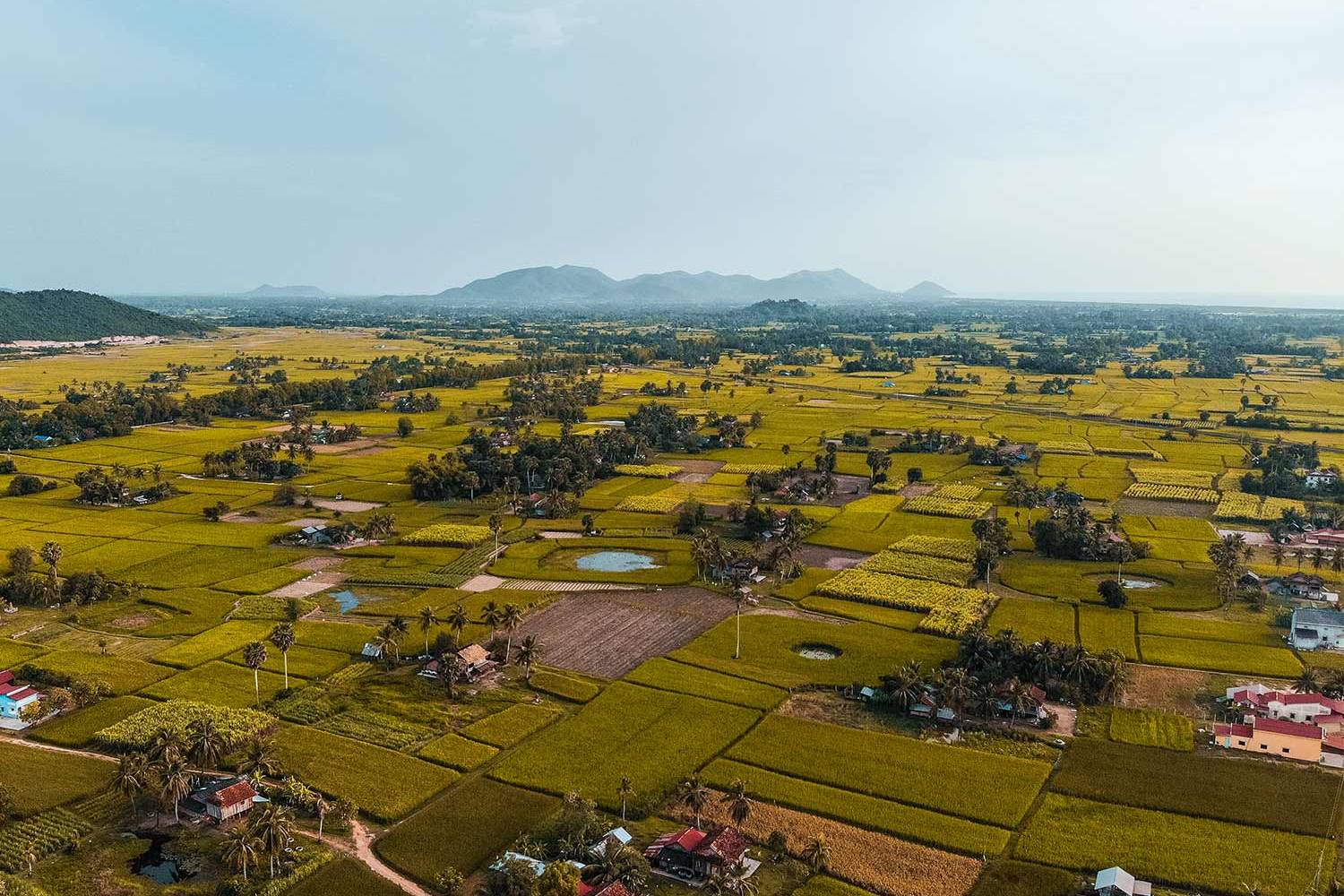
Where to start?
When planning your Cambodia itinerary, it’s good to know where you wanna start.
Our adventures through Cambodia started off in Siem Reap. In our case, a ticket to Bangkok was way cheaper than a flight directly to Siem Reap or Phnom Penh. So we choose to have a 2-day city trip in Bangkok before heading to Siem Reap with AirAsia. To see how we spent our 48 hours in Bangkok click here. In this Cambodia itinerary, we show you which places we visited and tell you all about our favourite sites.
BTW don’t forget to bring some dollars, when entering Cambodia you have to pay $20 for a 30-day visa. Also, keep in mind that you need some extra passport photographs for your visa and Angkor pass.


Travelling through Cambodia by public transport
Going from place to place in Cambodia is best done by bus. We used Camboticket to get our tickets for the bus, ferry or taxi. With the code CTAPP, you can get 10% off when booking tickets with their app. Another easy option is that you can get your tickets at almost any hotel or hostel. If that isn’t the case try visiting a Mekong Express office nearby or book online.
It can happen that they sell too many tickets and if that’s the case the bus can be really packed. Also, keep in mind that your bus driver usually tries to drop you off at the edge of the city centre, it looks like they are working together with the tuk-tuk drivers. They usually drop you at a place where you pay way too much for short-distance tuk-tuk rides. We used an app called Maps.me to pin a marker at the place where the bus driver should have dropped us. So when they were planning to drop us at the wrong place, we could show them the bus station. This app is a perfect offline alternative to Google Maps.
For short distances in the cities or just outside of them, a tuk-tuk is perfect. The price can vary between $1 to $3, never pay more. And don’t get fooled by the trick that the price is per person instead of per tuk-tuk. And always try to get a deal, it’s really common to do this in Cambodia.


Accommodation | Where to stay in Cambodia
When travelling through Cambodia there are enough options to get accommodation. We booked our accommodation one day in advance and that worked out pretty well. It gives you a lot of freedom and opportunities to change your itinerary. We always use booking.com and if you use this link you get a $15 discount. In some cases, you can even cancel your booking, if done on time, without being charged.
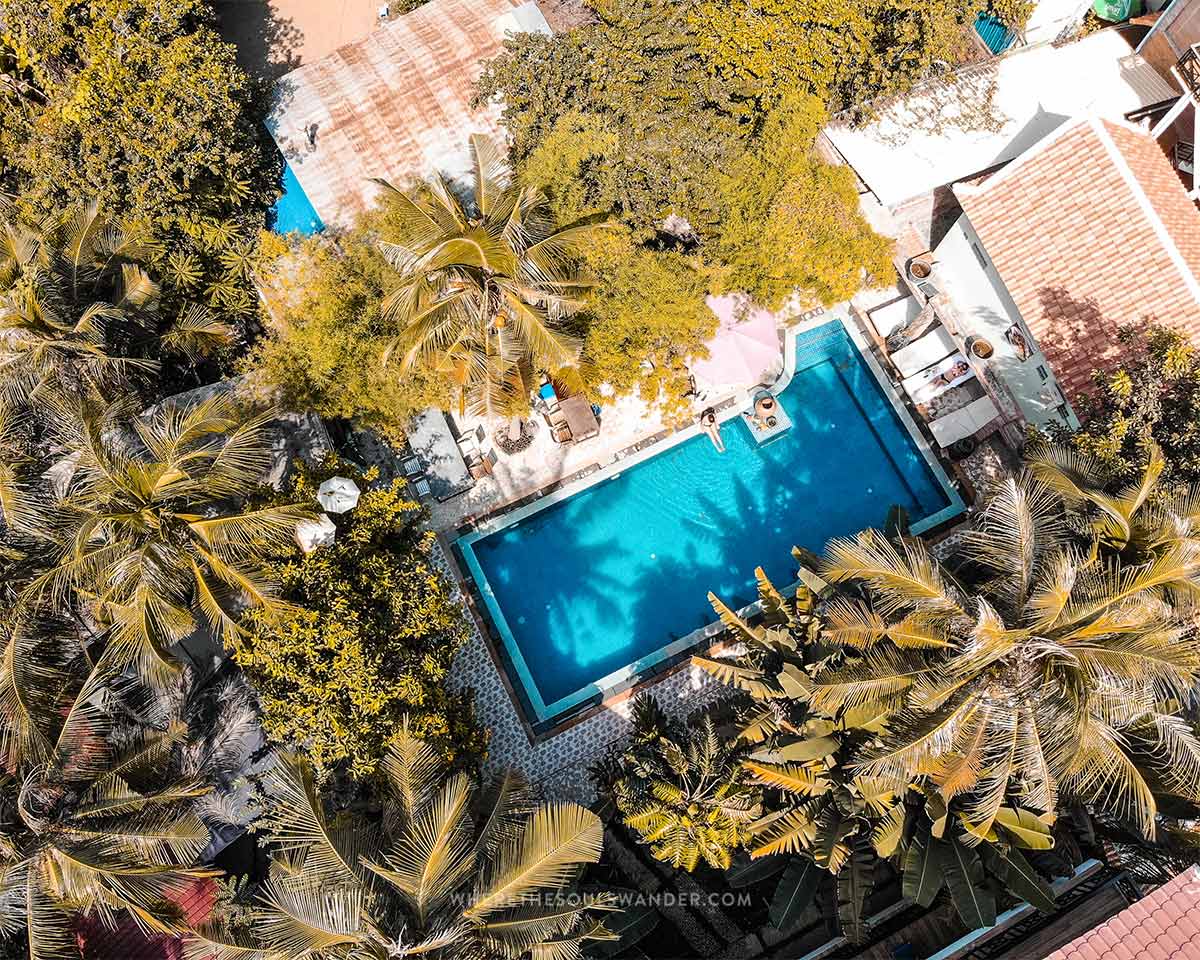
My 3-week Cambodia itinerary | Day-to-day overview
Day 1 – 4 | Siem Reap, the gateway to Angkor Wat
When travellers talk about Siem Reap they see it as a starting point to visit the world’s largest religious monument named Angkor Wat. If you are thinking about visiting Angkor and we know you do! You can have a look at our Temple running guide below. Besides the temples of Angkor, Siem Reap is a place rich in culture and history. It’s easy to spend 3 to 4 days here, including your visit to the temples. Enjoy the many lovely restaurants, and the exciting nightlife and have a visit to the night market. If you take Siem Reap as a home base you can take a trip to, Phnom Kulen also known as the ‘‘Mountain of Lychees’’. It’s one of the best waterfalls in Cambodia and totally worth a visit.
Joining a day tour from Siem reap to Angkor is easy and includes a visit during sunrise. For prices and availability check here.


Day 5 – 6 | Battambang, Cambodia’s underrated gem
The city that’s most famous for its Bamboo train. Driving through the rice fields with a traditional train is a fun thing to do. You can combine it with a visit to the killing caves of Phnom Sampeau which was used as an execution site. During the Red Khmer regime, they used this cave to kill their victims and threw the bodies into the cave afterwards. On the other side of the tragic cave, you have the Bat Cave. Every day around sunset thousands of bats leave the cave, an amazing show by Mother Nature. In the city centre of Battambang, you can see the French colonial influences. You can say that Battambang has something special, although there isn’t much to do in the city, the cosy restaurants and laid-back cafes make it worth your stay. We really enjoyed eating tapas at The Lonely Tree Cafe or getting lunch at About The World.


Transit | Sihanoukville
Once a sleepy beach town but it’s rapidly transforming due to Chinese investments, Sihanoukville has now, sadly, become a gambler’s paradise, with casinos popping up on just about every corner.
Not our favourite town, but that was no problem for us. We went straight to the ferry that brought us to Koh Rong. Sihanoukville is the best-known harbour city and you have to go here when you are going to visit Koh Rong or Koh Rong Samloem.
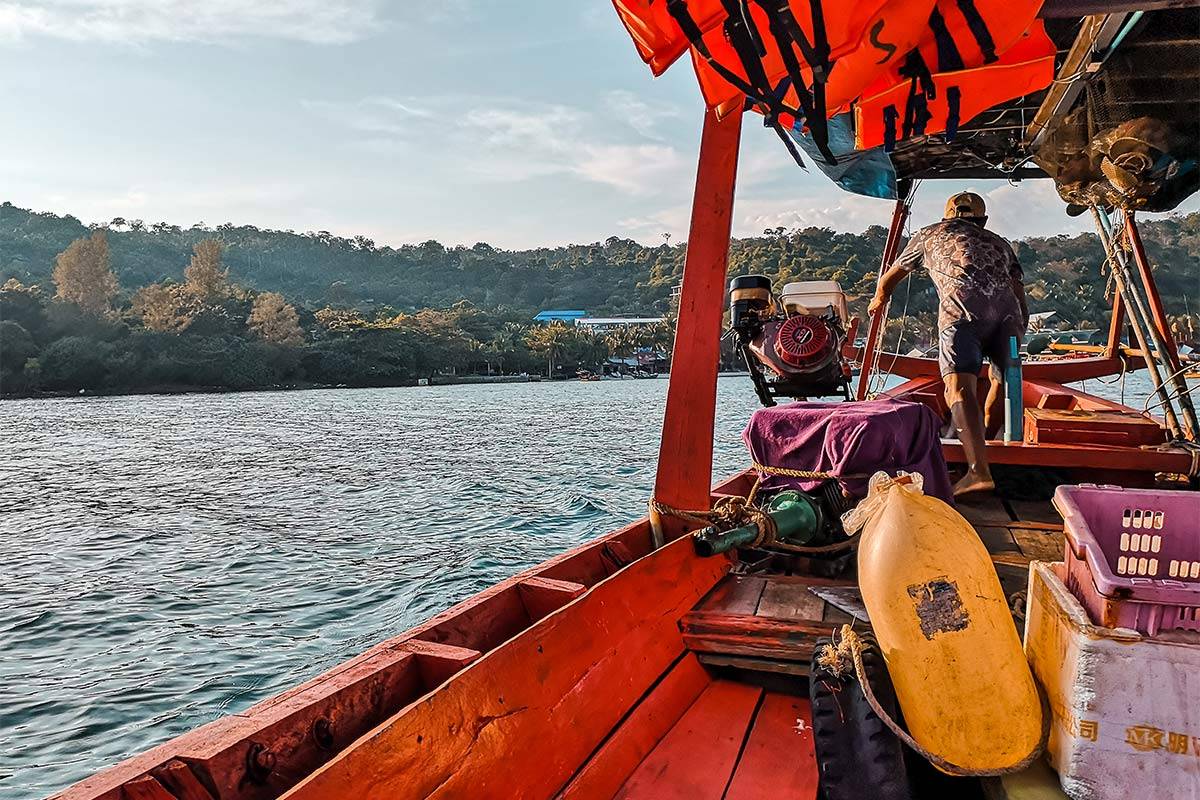
Day 7 – 11 | Koh Rong, Cambodia’s island paradise
If you like to have some time off at the white beaches or take a relaxing swim in the clear blue sea. Koh Rong is your place to go. When on the island you can choose to stay on the busy side to visit the bars and go partying. Or just pick a quiet beach on the other side of the island. We really liked our stay on the island and planned it in the middle of our itinerary. We even stayed a few days longer than planned.
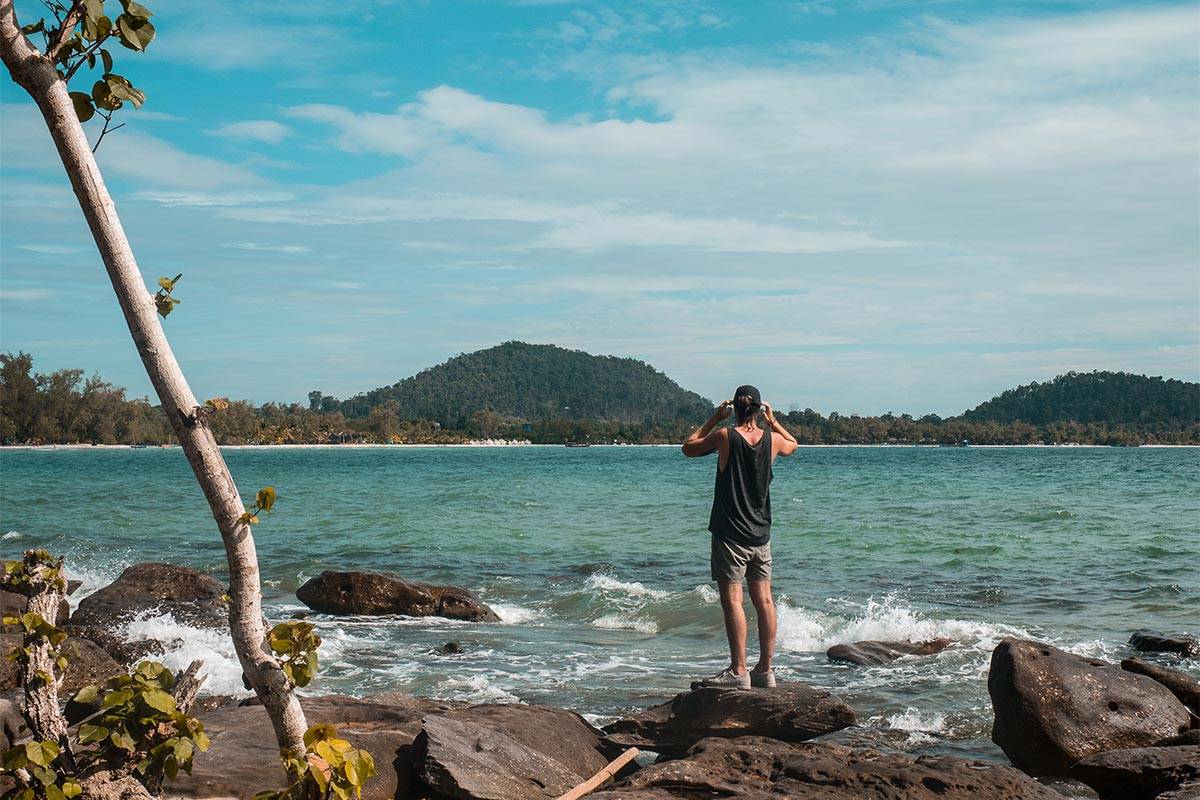
Day 12 – 14 | Kampot, Cambodia’s scenic riverside town
Kampot is a small city on the coast with a lovely relaxing vibe. One of the charms of Kampot is that life feels slow over here. We ended up staying there a bit longer because of the nice atmosphere and good restaurants. We had some awesome Khmer food at Rikitikitava and enjoyed some good burgers at Pepe and the Viking. A must-do when in Kampot is driving to the top of Bokor Hill, you can easily rent a motorbike and explore the mountain by yourself. On top of the 1,080 meters high mountain, you have a viewpoint that gives you the most amazing views of the region. Take a visit to the famous Catholic Church or just restored Bokor Hill Hotel, which is now a hotel. If you own a drone you should definitely take it with you to the top, the bird-eye view is just mesmerizing!
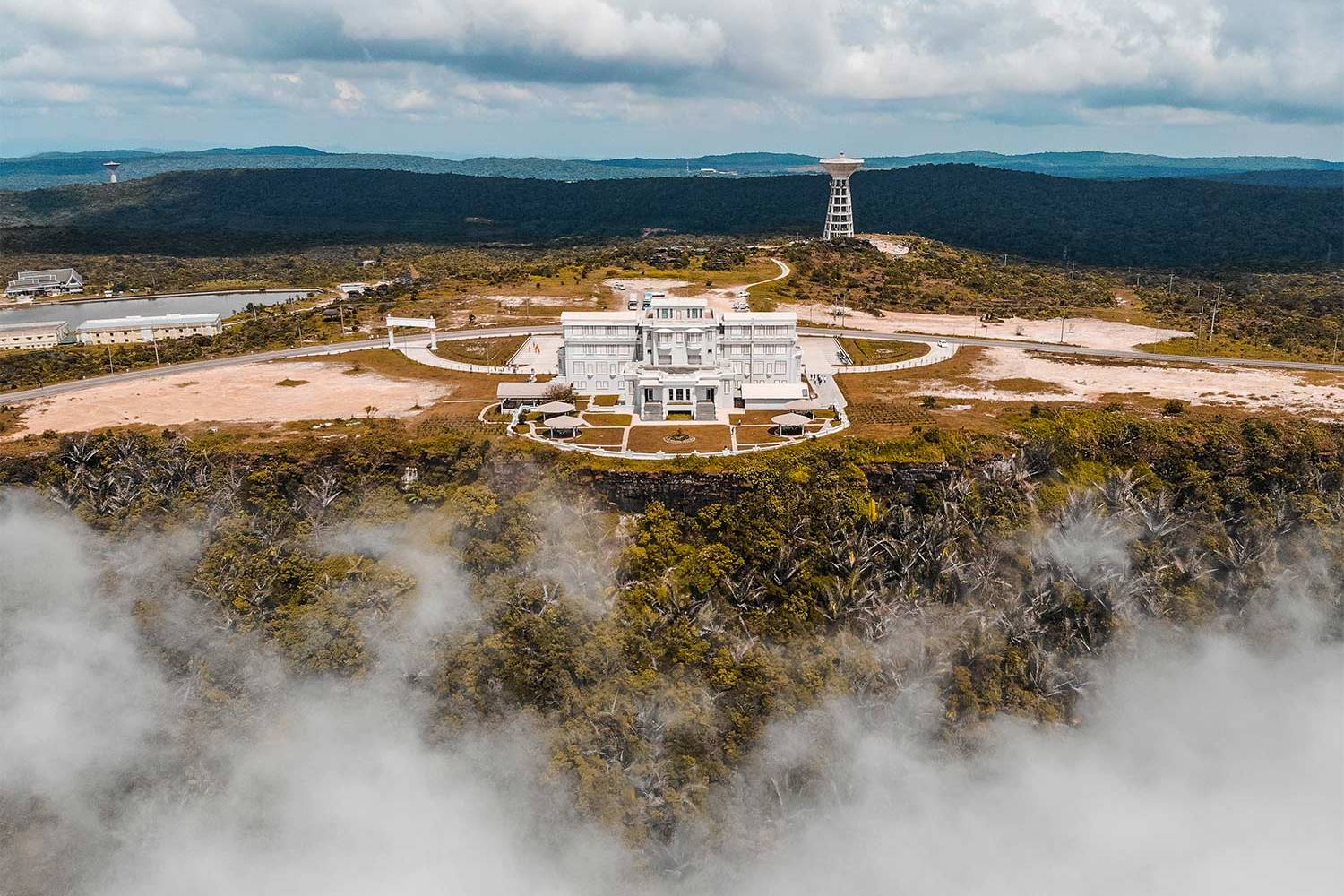
Day 15 – 16 | Kep, an authentic local town
If you love seafood make your way to Kep. This small coastal city is well known for its ‘’Crab Market’’. You can easily spend a day in Kep to rent a motorbike and explore the surrounding countryside. Take a look at La Plantation which is one of Cambodia’s famous pepper plantations. They provide you with a free guided tour and let you taste all different kinds of peppers. The dusty road brings you through local villages and lovely rice fields and you can even have a stop at Kampot’s “Secret Lake”.


Day 17 – 18 | Phnom Penh, Cambodia’s energetic capital
The capital of Cambodia is really overwhelming and definitely not our favourite place in Cambodia. But if you don’t know anything about what happened during the Khmer Rouge regime, then this is where you should go. Have a visit to the Tuol Sleng Genocide Museum and take a look at the tragic Killing Fields just outside of Phnom Penh. Keep in mind that visiting those places can be shocking and may need some time to settle. If you want to see some other cultural things in Phnom Penh pay a visit at What Preah Keo better known as The Silver Pagoda. Or maybe even try a traditional Khmer cooking lesson. At night you can have dinner or a drink at one of the many restaurants or rooftop bars.
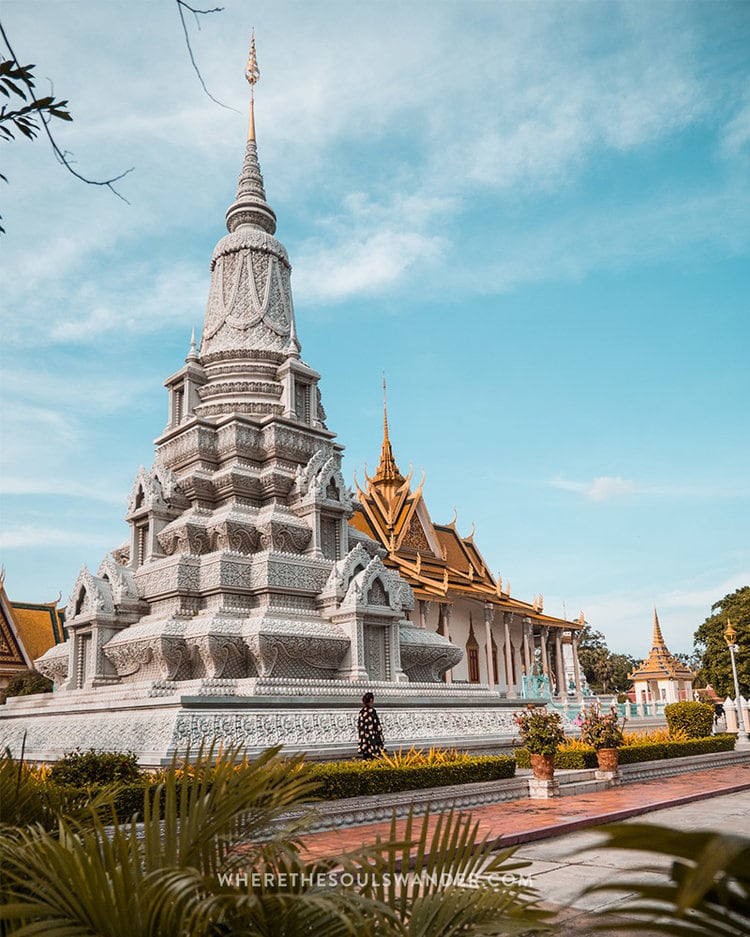
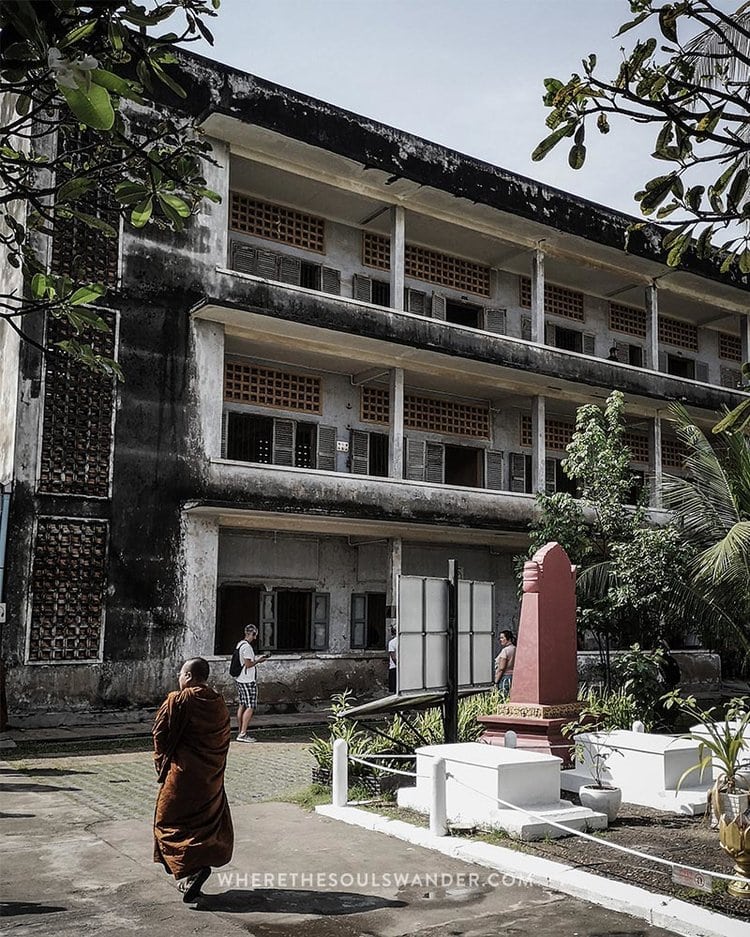
Stay safe in Cambodia | Travel insurance
Though Cambodia is perfectly safe for travellers, I always strive to sort out my travel insurance before arriving in a foreign country, and I highly advise anyone else to do the same.
Where we prefer that everything goes smoothly during our travels, something unfortunate can happen at any moment, whether it’s an injury or an accident on the road. When that happens, it is better to be safe than sorry.
Heymondo | Whether you’re going on a 3-week backpacking trip, or planning a long stay somewhere abroad, Heymondo has excellent insurance options either way – plus full covid-19 coverage and a handy app with 24-hour medical assistance. Readers of WTSW receive 5% off any insurance policy, more information here.
World Nomads | If you’re an adventure seeker, backpacker, or planning your once-in-a-lifetime world trip, make sure you check out World Nomads, they designed the perfect travel insurance to help you travel safer and smarter. Do note that they’re not covering covid-19 related claims.
Plan your Cambodia itinerary with these essential guides
9 Wonderful reasons why Morocco should be your next travel destination
When thinking about travelling in North Africa, Morocco is the most popular destination. And if you have any interest in other cultures, Morocco is the way to go. With a good balance between dynamic landscapes, colourful architecture and vibrant cities Morocco has much to offer. From walking through crowded medina’s, staying in a Riad to sleeping in the Sahara desert. Some people choose to only visit Morocco to stay in Marrakech, but believe us, there is so much more to explore.
If you are still in doubt, here are some reasons that hopefully make you wanna jump on that plane!
9 REASONS WHY MOROCCO SHOULD BE YOUR NEXT TRAVEL DESTINATION
FIRST OF ALL
Most people around us told us only about the negative aspects of visiting Morocco. But that only made us curious to go and explore for ourselves. When we visit a new country we always choose to keep our judgement at the customs. That gives us the opportunity to blend in with the local people, and in Morocco, that is an experience you don’t wanna miss. Some advice, when you are thinking about a visit to Morocco: don’t let somebody else their judgement affect your travel plans.


1 | GET LOST WHILE STROLLING THROUGH THE MEDINA
Are you one of those people that love to get lost wandering unknown places? A Medina can be a maze and will definitely confuse you where to go. With thousands of narrow streets and handcrafted stalls that all look the same, you will have a big chance of getting lost. But to be honest, it’s really great to feel the vibe and see what’s going on in the medina of Marrakech. To be sure you will find your way back, download and have Maps.me prepared to save the day.
2 | UNWIND IN A TRADITIONAL MOROCCAN RIAD
Ever wanted to stay in a riad? This is your chance. In the heart of the Medina of Marrakech, you will find a lot of them. Once you are inside a riad al the chaos of the Medina is gone and your time to relax starts. You can find good affordable Riads on booking.com. We really enjoyed our stay at the Riad Baba Ali.


3 | MOROCCO’S ARCHITECTURE IS ON POINT
With architectural highlights in the Koutoubia Mosque, Saadian Tombs and the Ben Youssef Madrasa. Marrakech will really satisfy your architectural needs. While walking through the medina you will see traditional Moorish architecture at almost every corner. It is just one of those things that remind you of your visit to Morocco.


4 | MOROCCAN FOOD IS RICH IN SPICES AND HERBS
When in Morocco you should and will probably eat a lot of tagine and couscous. Tagine is a dish that is slowly cooked in a clay cooking pot. This signature dish is prepared with veggies, beef, chicken or lamb depending on your preference. One thing is for sure, it is packed with lovely herbs and spices and you can order the dish at almost every corner.
Another dish they serve is Harira, a Moroccan lentil soup which is most famous as the meal they eat when breaking the fast during Ramadan.
5 | MOROCCO’S CULTURE IS RICH AND CAPTIVATING
This is one of the things that can work for you, or against you. But when you are interested in other cultures and just let the country guide you, this can be such a great experience. With lovely medinas and souqs it feels like you are in a whole different world, and that is the thing we like the most. It’s such a different vibe than many of us experience on a daily basis. If you are curious and open to blend in you will have a really great time.
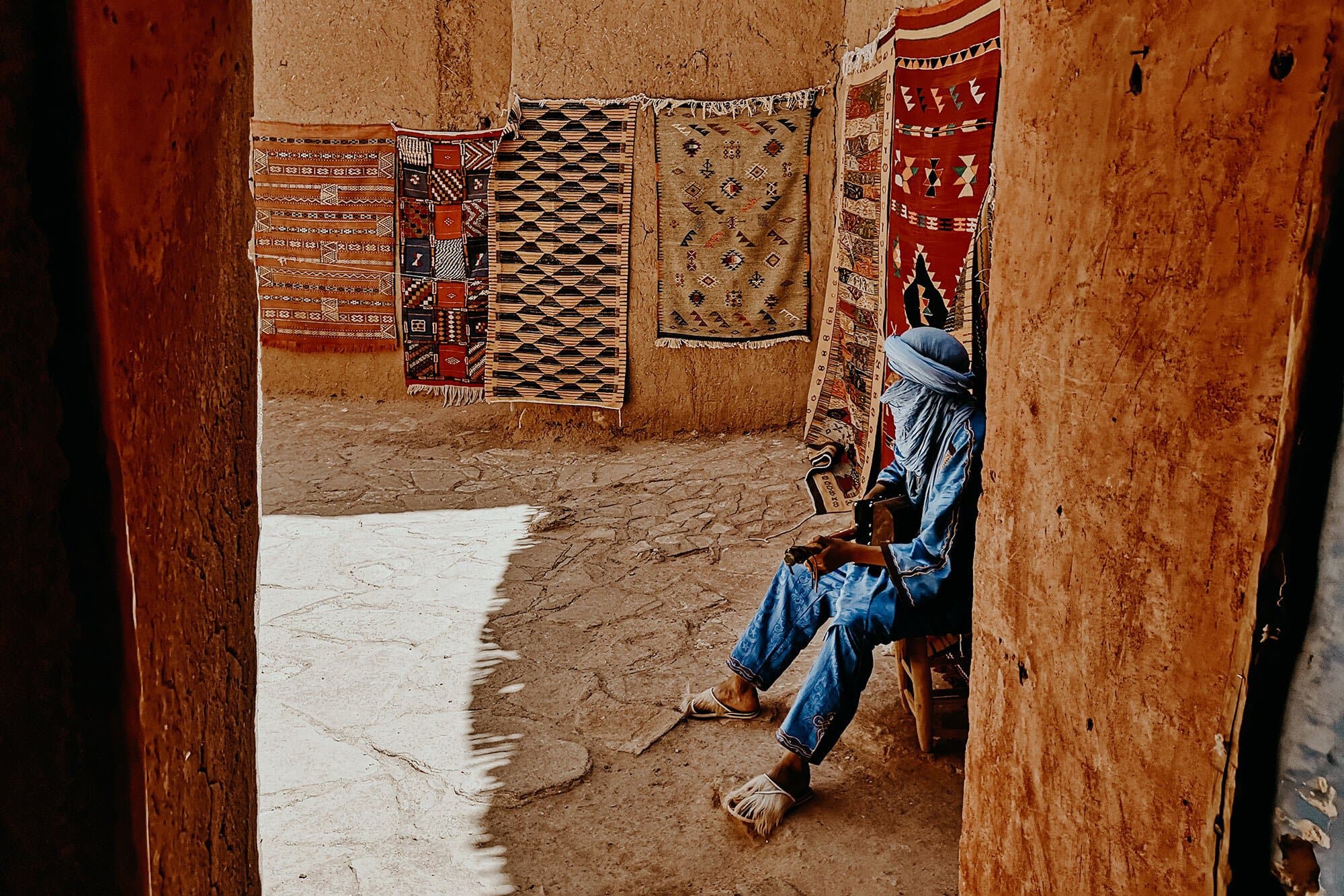
6 | MOROCCO IS WELL KNOWN FOR ITS DYNAMIC LANDSCAPES
If you like breathtaking landscapes Morocco is the way to go. They have mountains like the High Atlas mountains, unbroken silence in the Sahara desert and a serene and calm oasis in Tinghir. Morocco has a lot of diversity in its vast natural environment. Beside those lovely sceneries, Morocco will certainly surprise you with even more natural beauty.
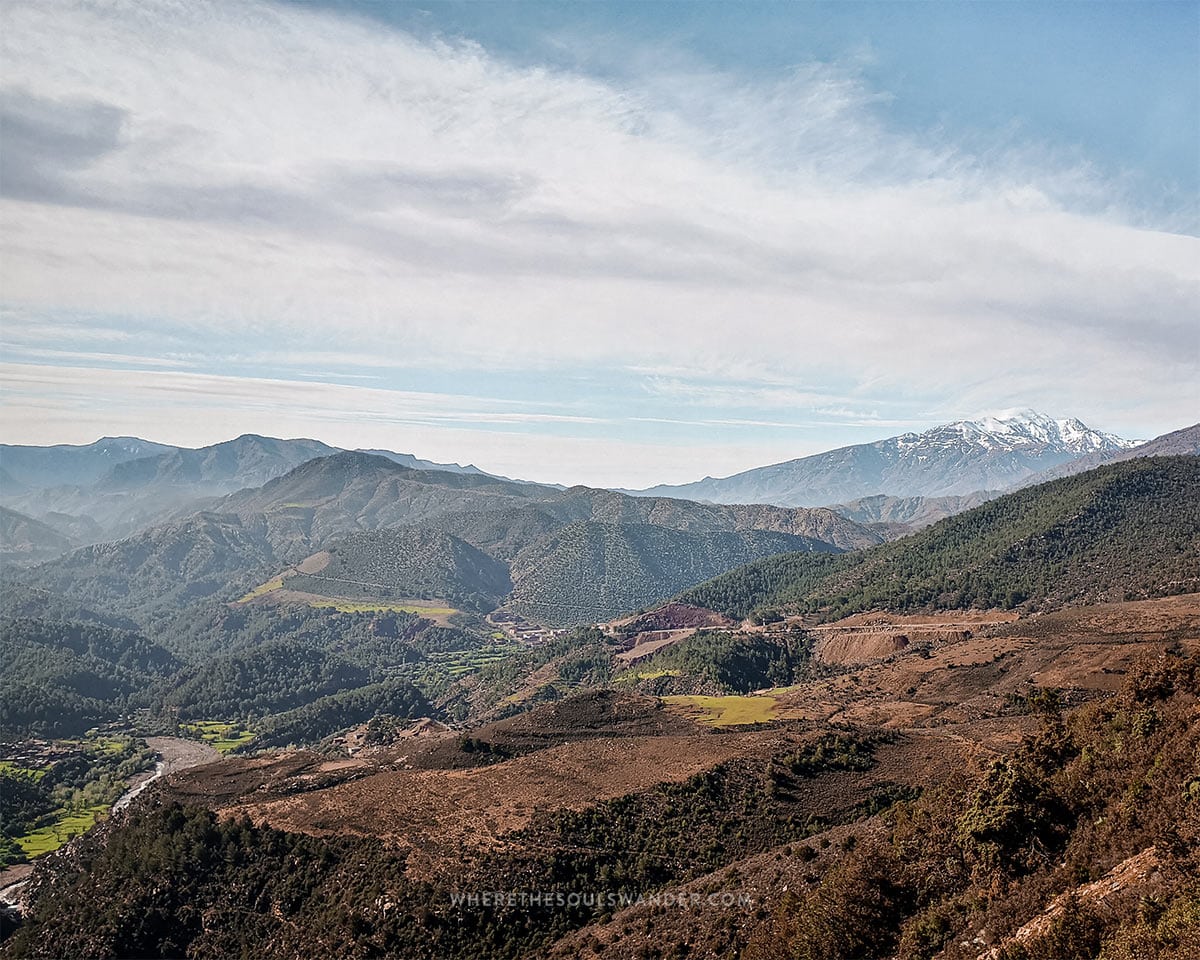
7 | MOROCCO MAKES A PERFECT ROAD TRIP DESTINATION
When we booked our tickets to Morocco we had no other choice then hitting the road. And that is one of the reason why we had such an amazing time. Interested in which destinations crossed our Moroccan road trip? One of them was really, uhm sandy.


8 | SLEEP IN THE MAGICAL SAHARA DESERT
Guess what, this is the place we just mentioned. When you make your itinerary for Morocco don’t miss the opportunity to sleep in the Sahara desert. If you want to know more about our experiences in the Sahara you should check out our Sahara desert Guide. Keep in mind that a trip from Marrakech to the Sahara will cost you about three days of your travel time.
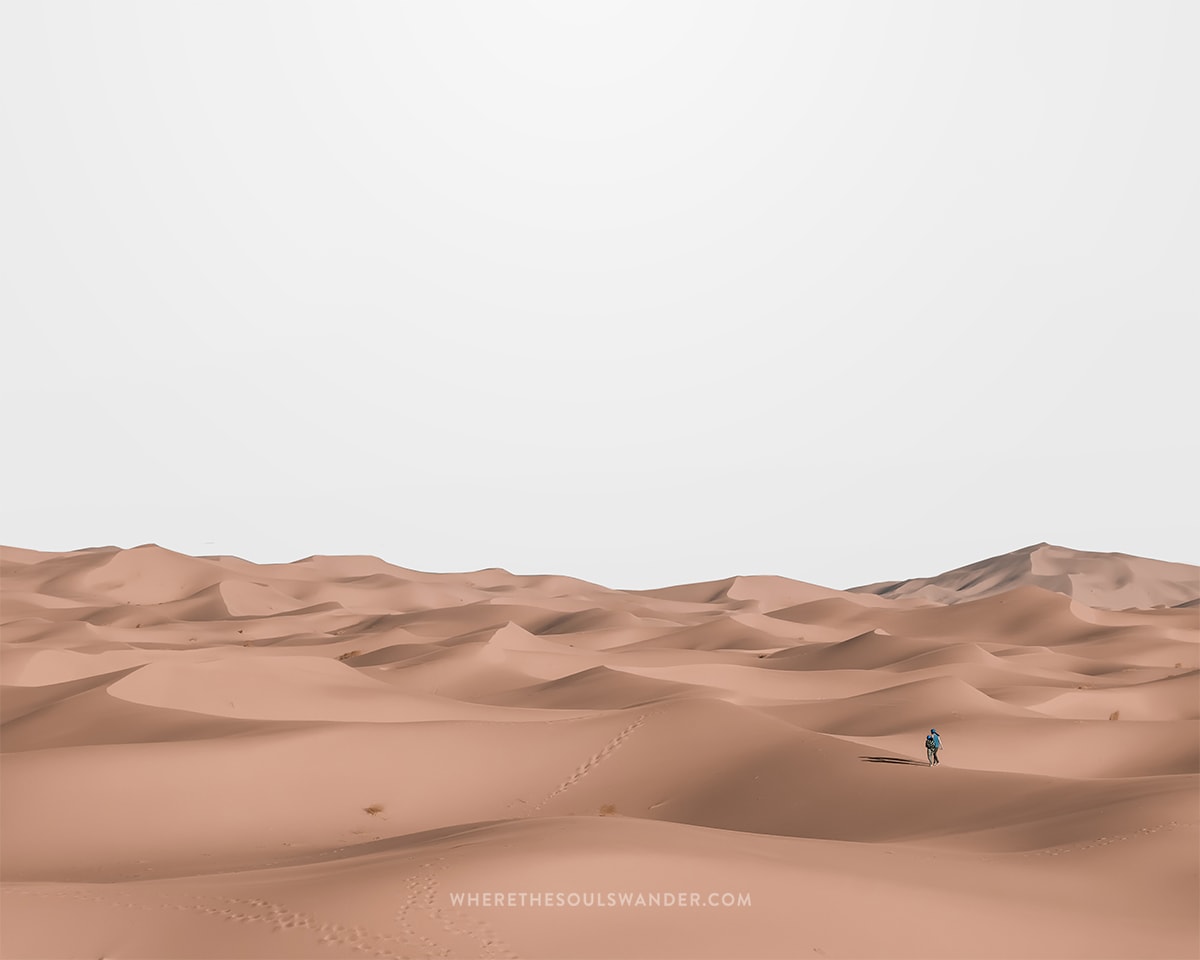
9 | VISIT AIT BEN HADDOU, A GAME OF THRONES FILMING LOCATION
If you watched Game of Thrones you will probably recognize this scenery. This old Kasbah is built up against the hill and is one of the best looking sceneries you will find in Morocco. When you walk your way up through the narrow streets it really feels like you are part of a movie.
Some movies that are filmed here are: The Mummy, Gladiator and Prince of Persia: The sands of time.
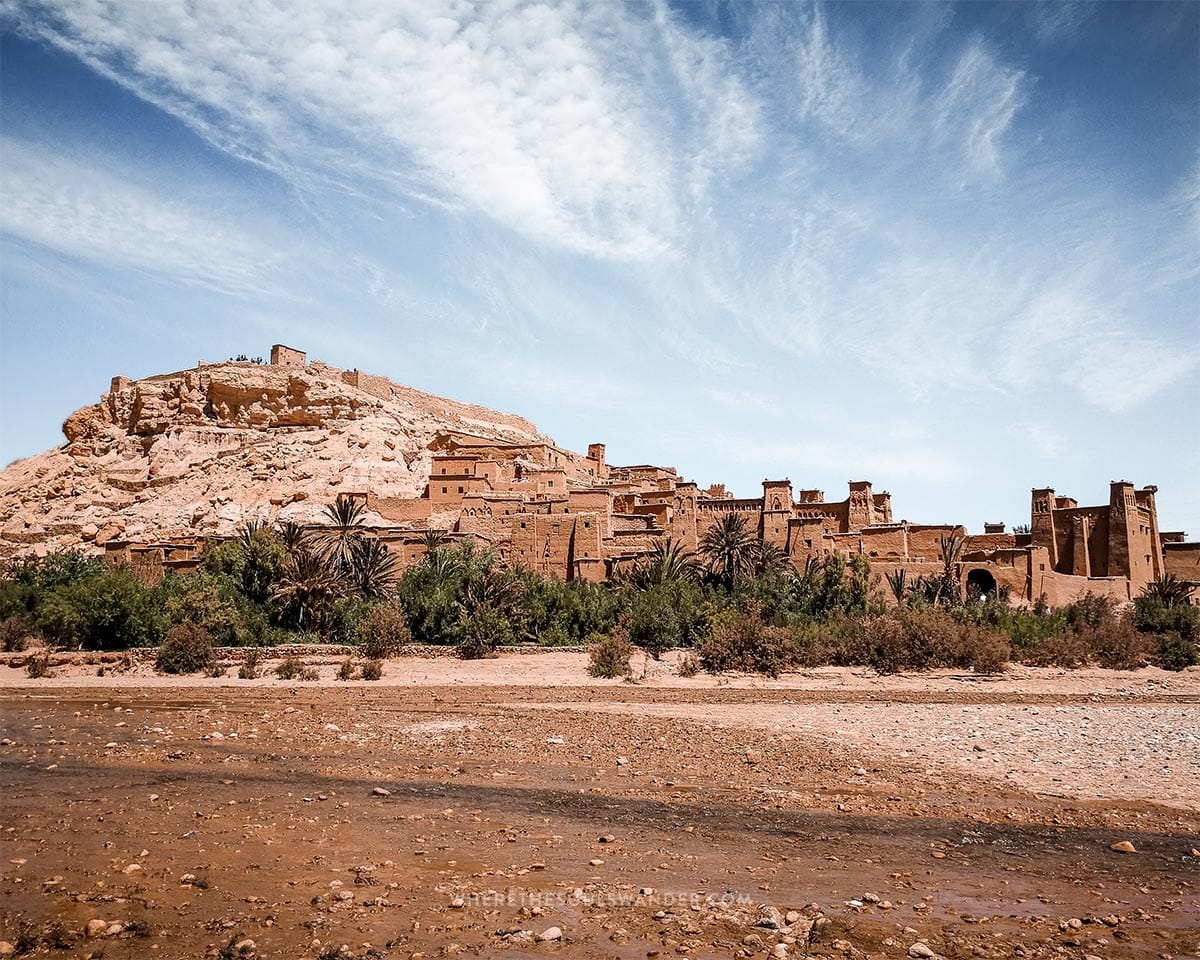
SAFETY IN MOROCCO | TRAVEL INSURANCE
When travelling this big wide world, I never go on an adventure without my essential travel insurance sorted out, and though I felt safe in Morocco, I recommend anyone travelling here to do the same.
Though you rather don’t think about the things that could go wrong, there’s always a chance that something happens, and when that’s the case, it is better to be safe than sorry.
To help you find the right policy, I’ve listed two of my favourite options below:
Heymondo | Whether you’re going on a 3-week backpacking trip, or planning a long stay somewhere abroad, Heymondo has excellent insurance options either way – plus full covid-19 coverage and a handy app with 24-hour medical assistance. Readers of WTSW receive 5% off any insurance policy, more information here.
World Nomads | If you’re an adventure seeker, backpacker, or planning your once-in-a-lifetime world trip, make sure you check out World Nomads, they designed the perfect travel insurance to help you travel safer and smarter. Do note that they’re not covering covid-19 related claims.
PLAN YOUR MOROCCO ITINERARY WITH THESE ESSENTIAL GUIDES


